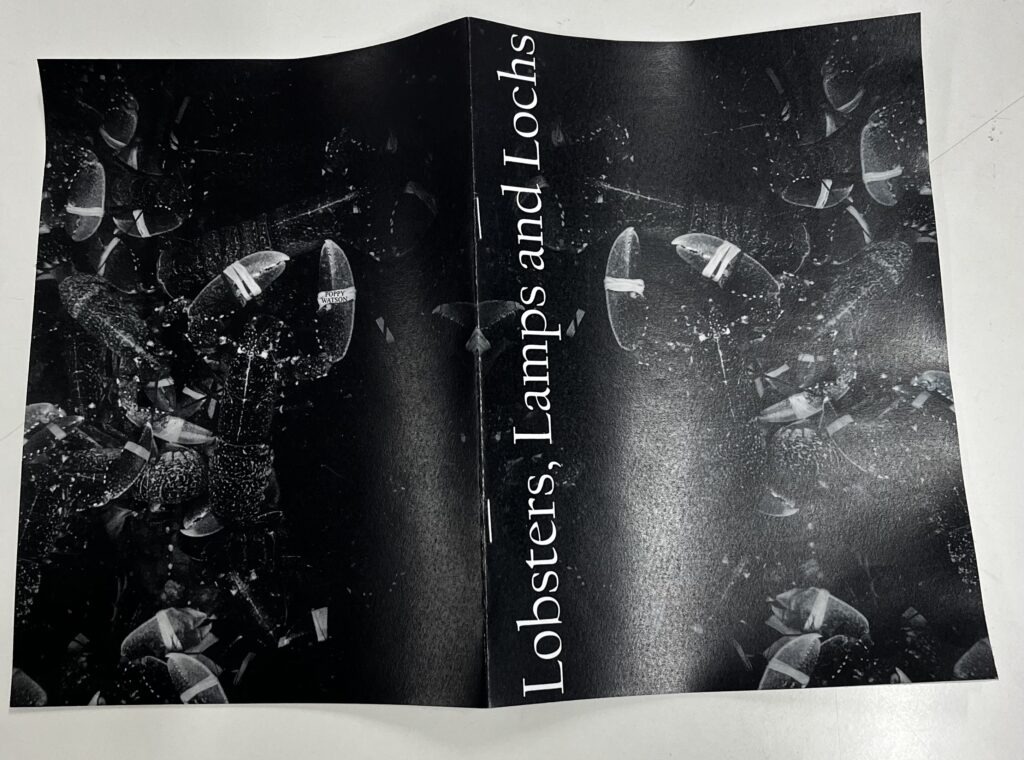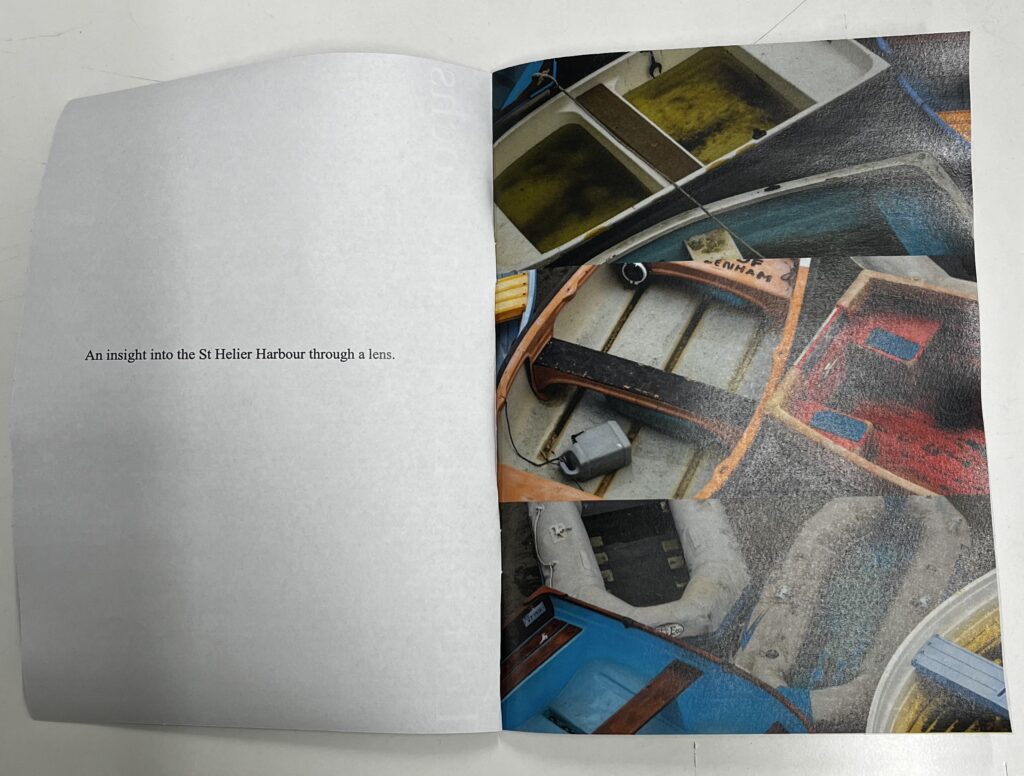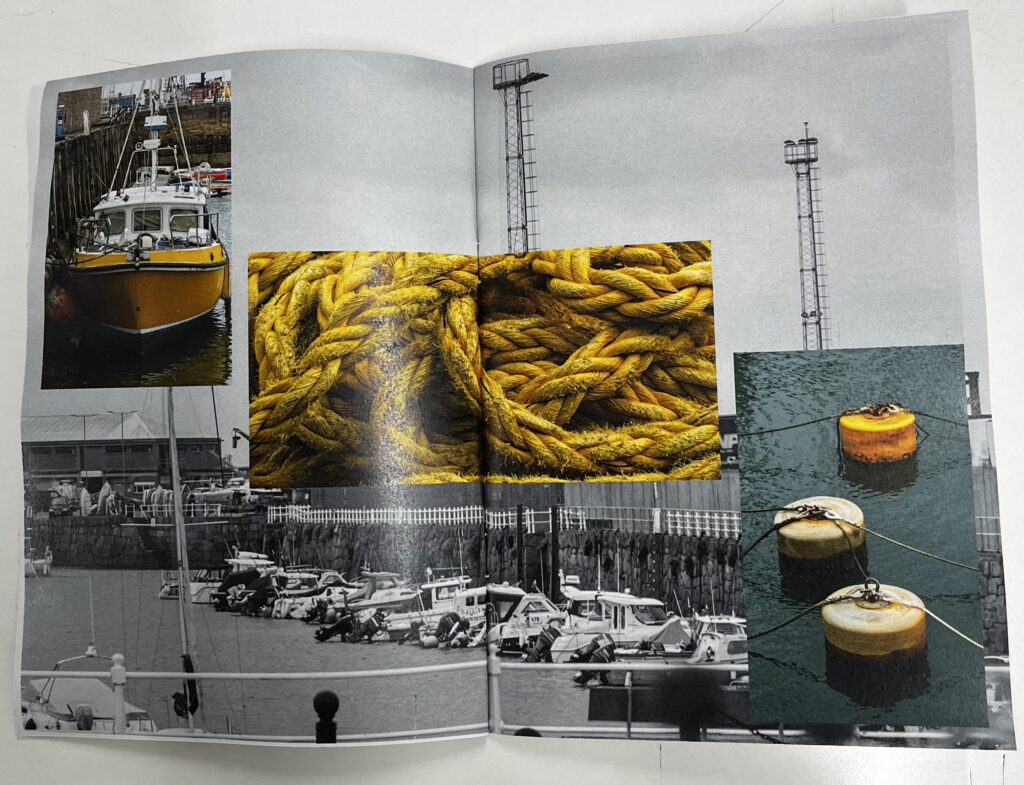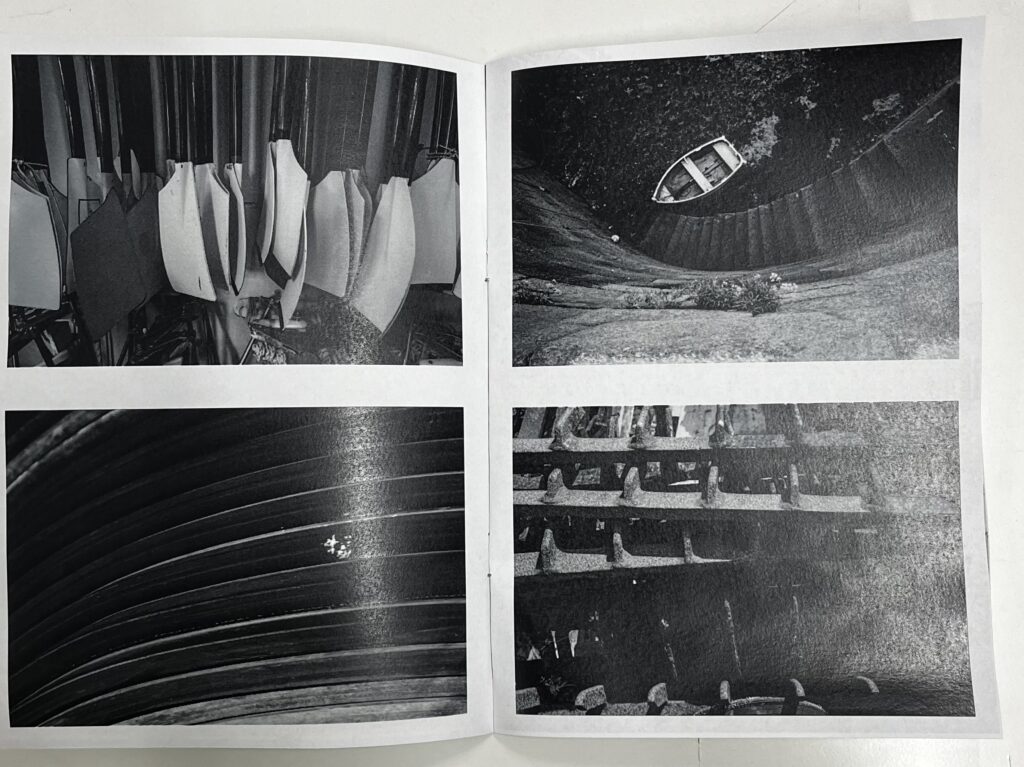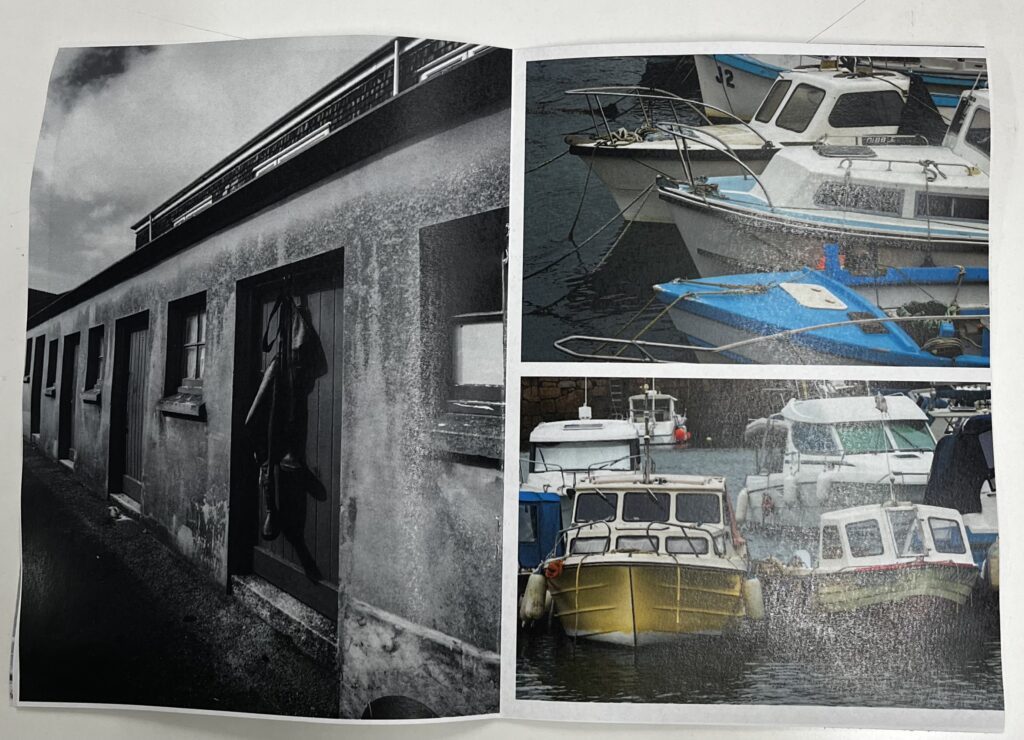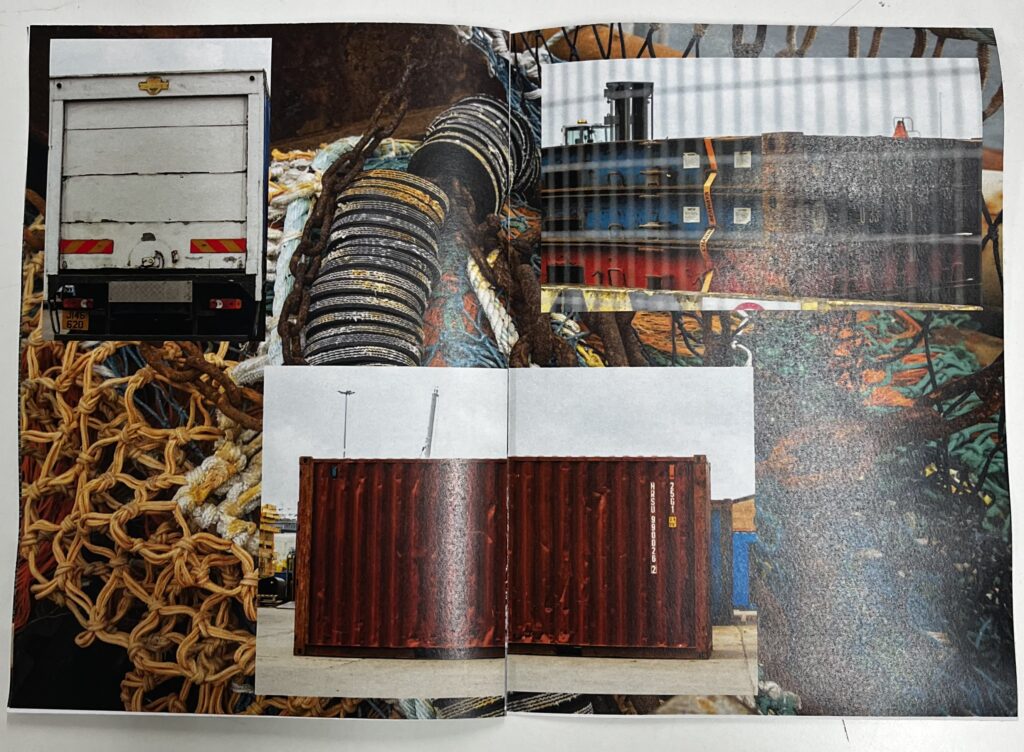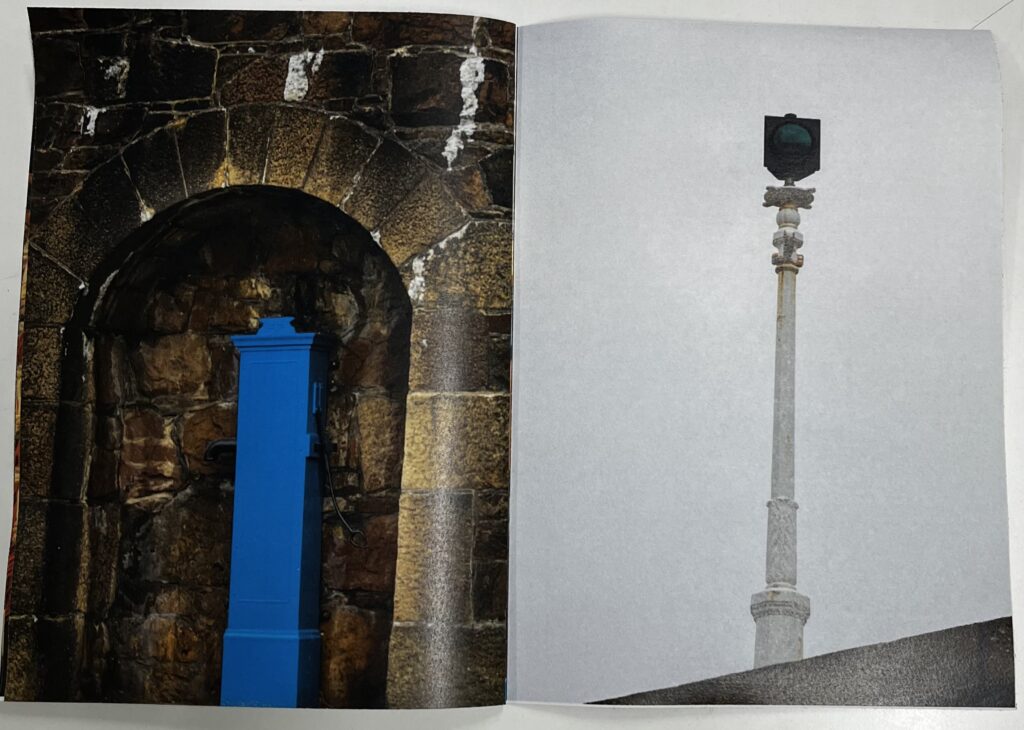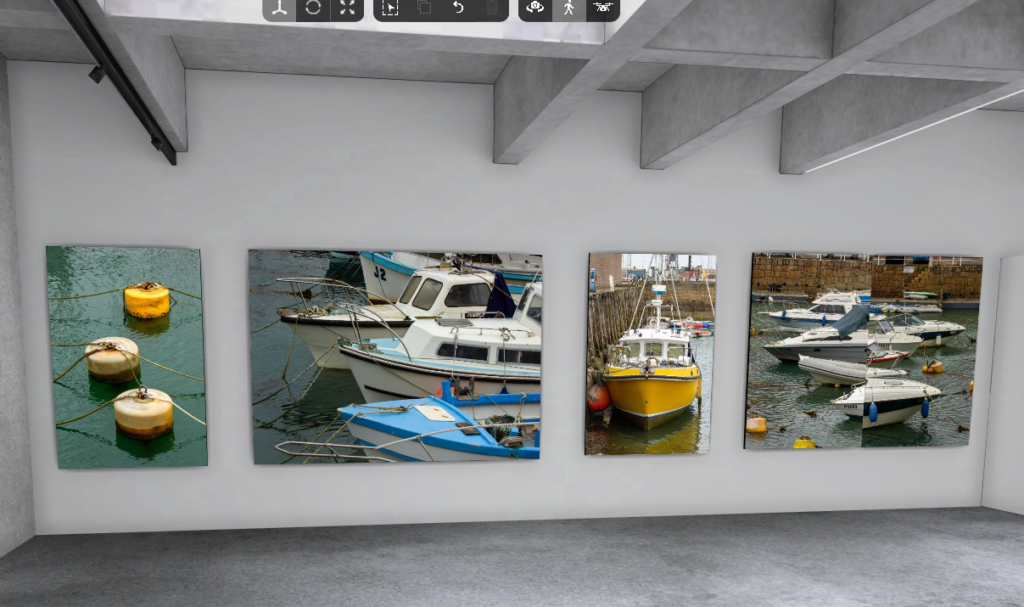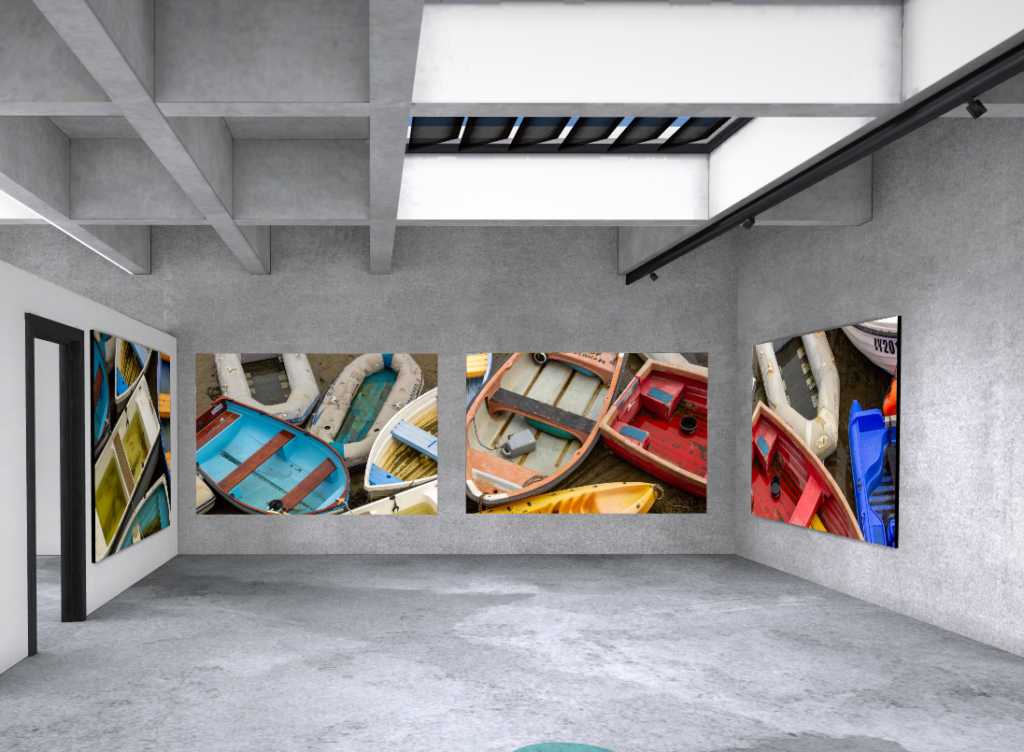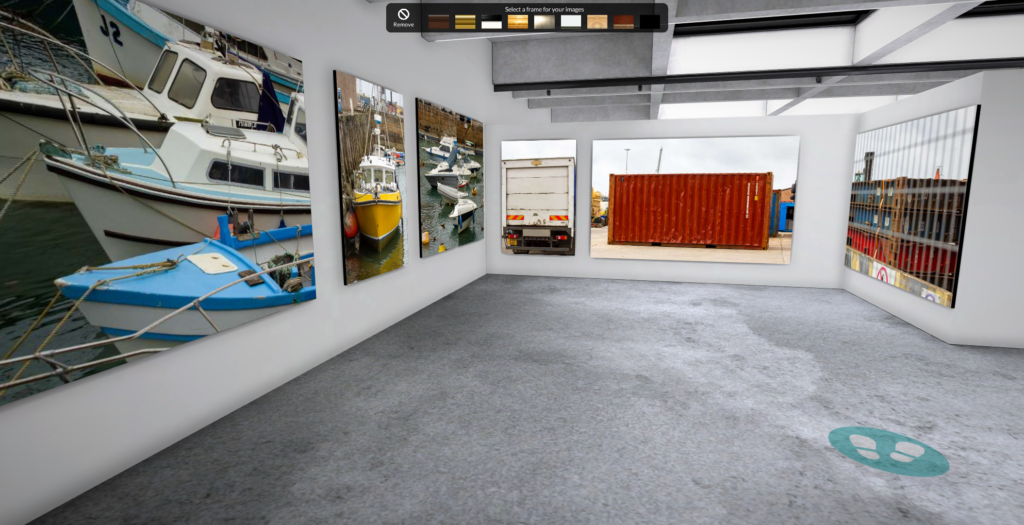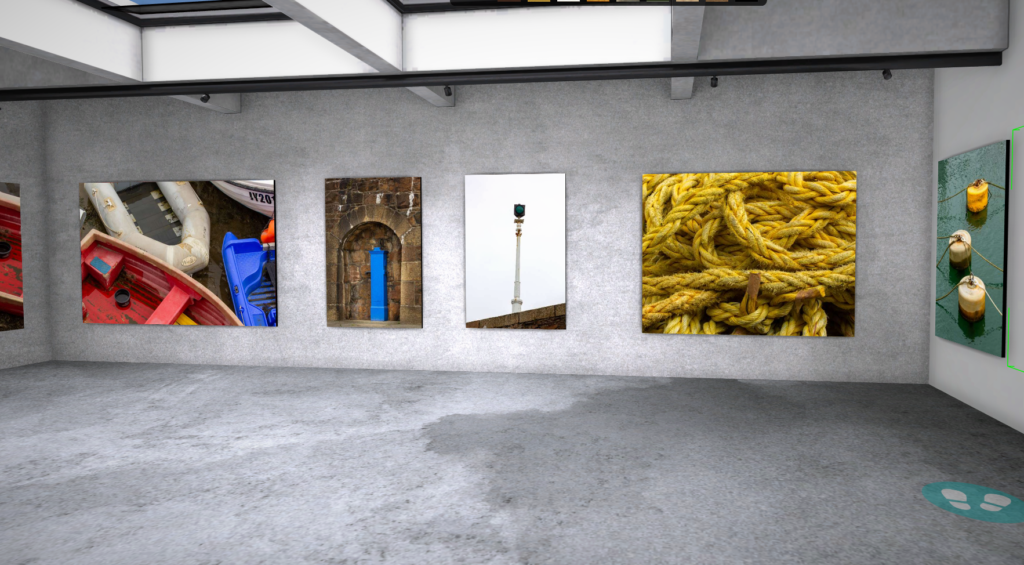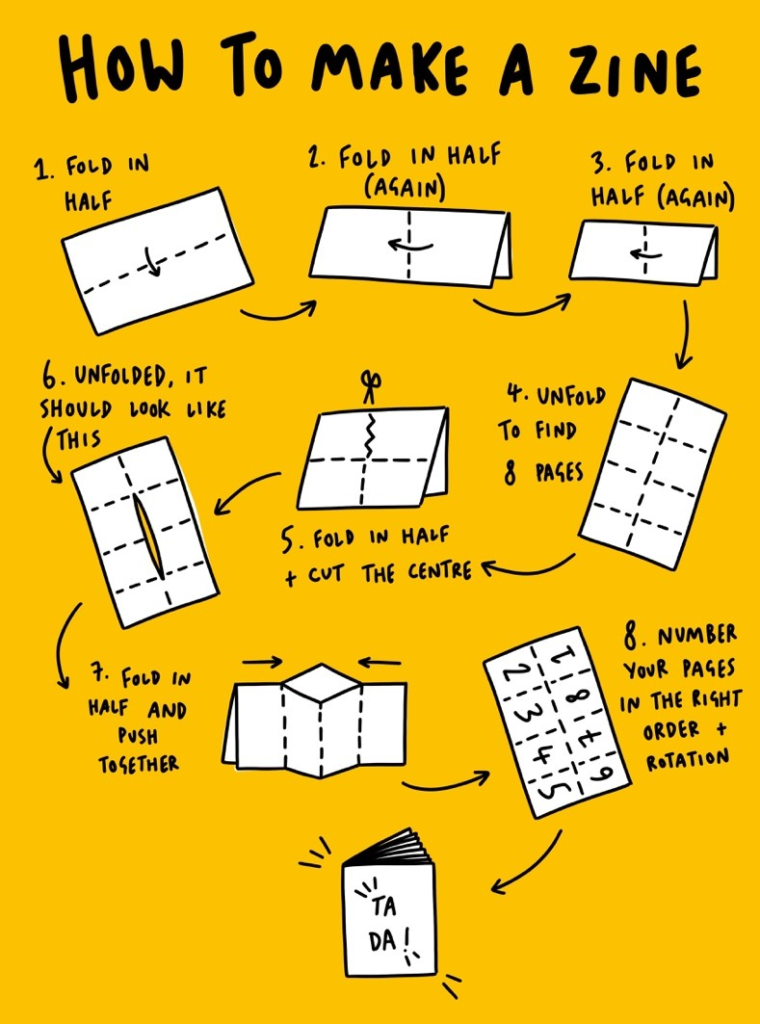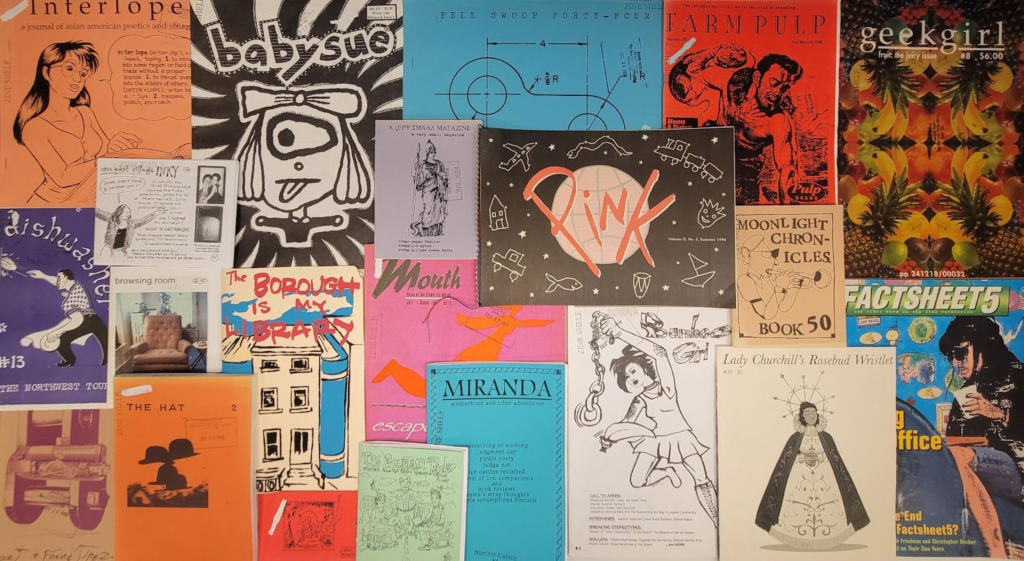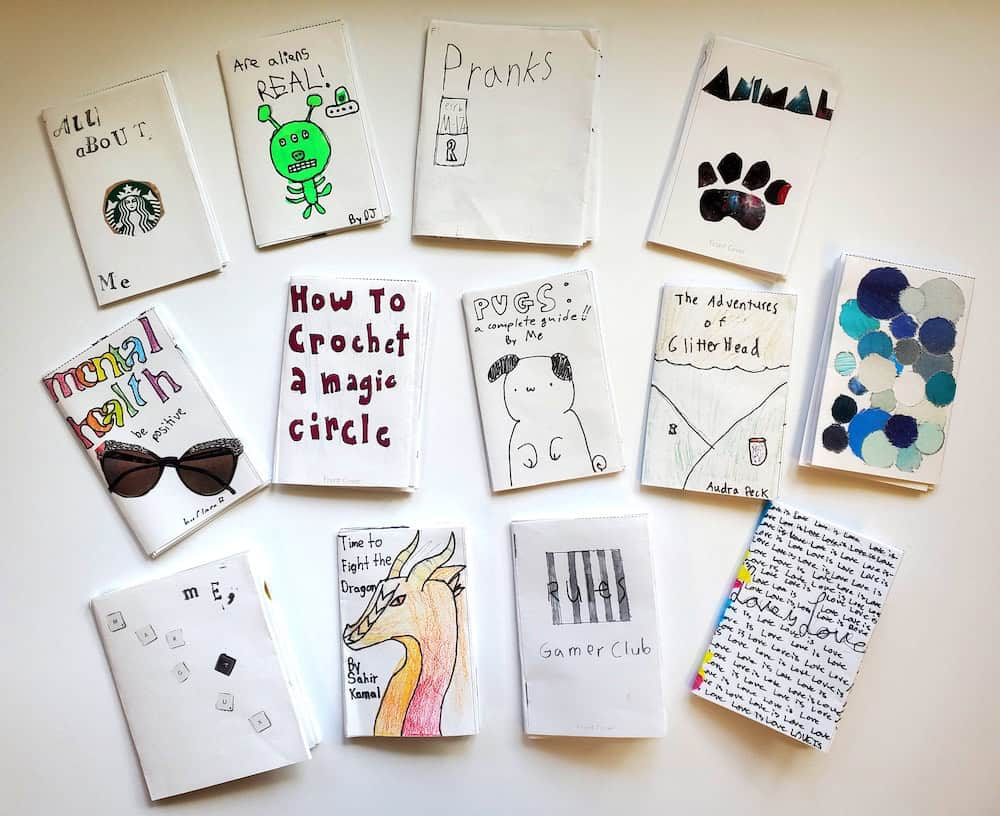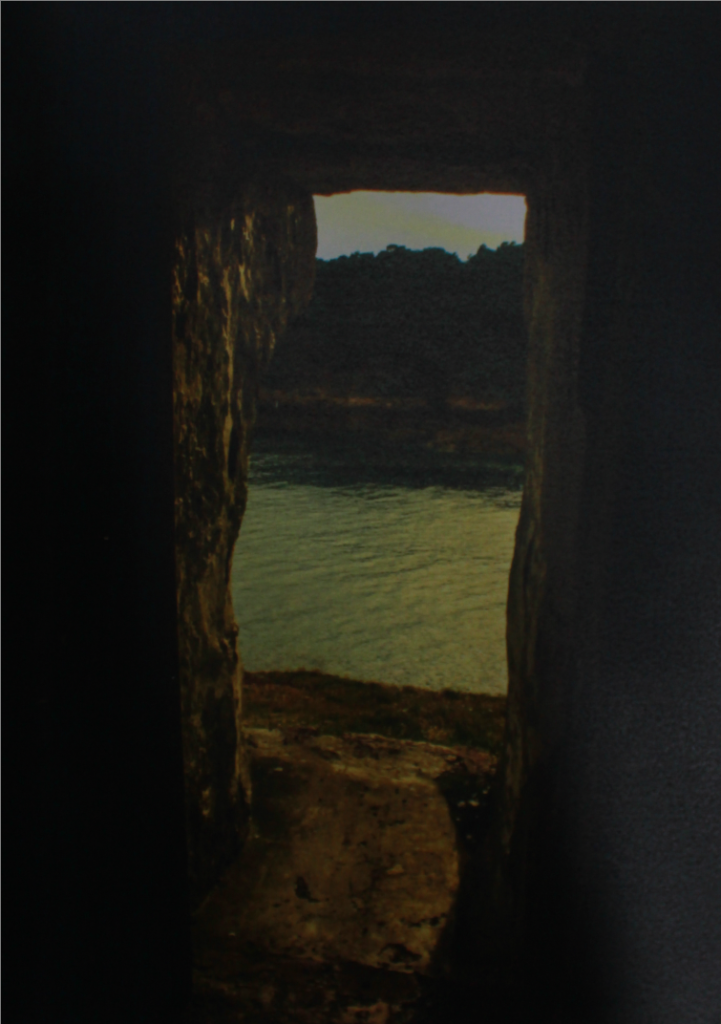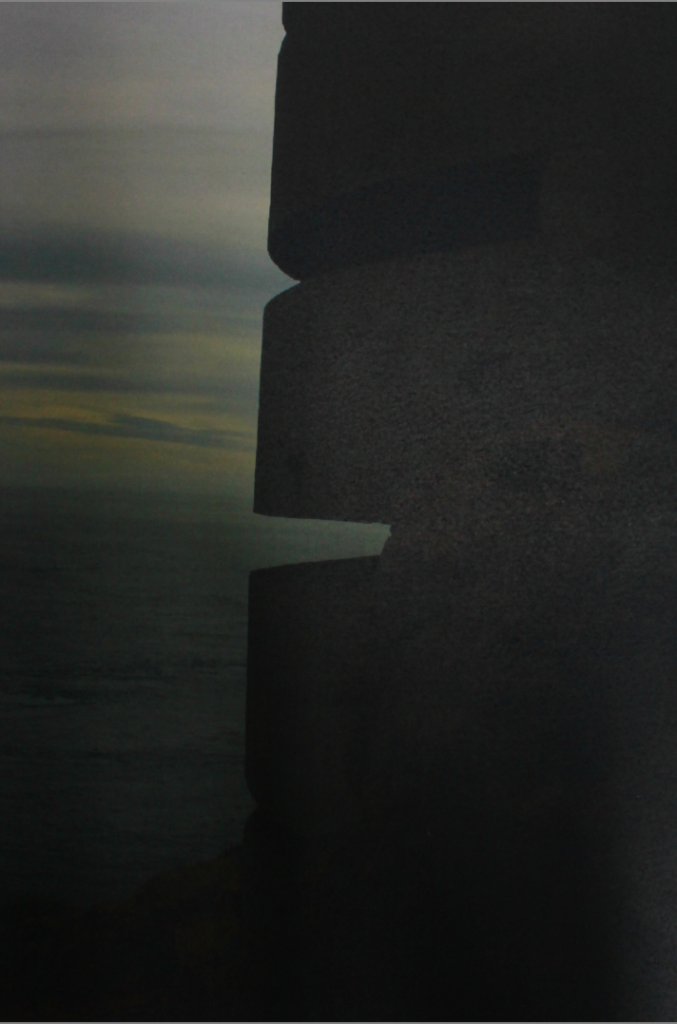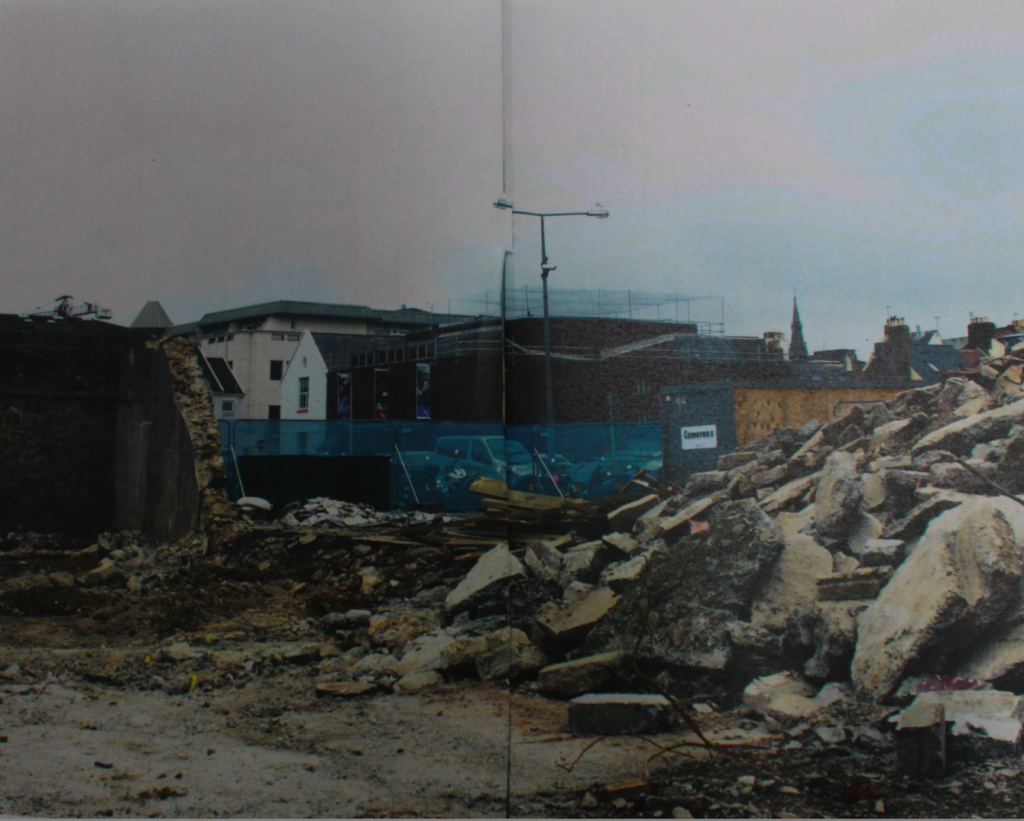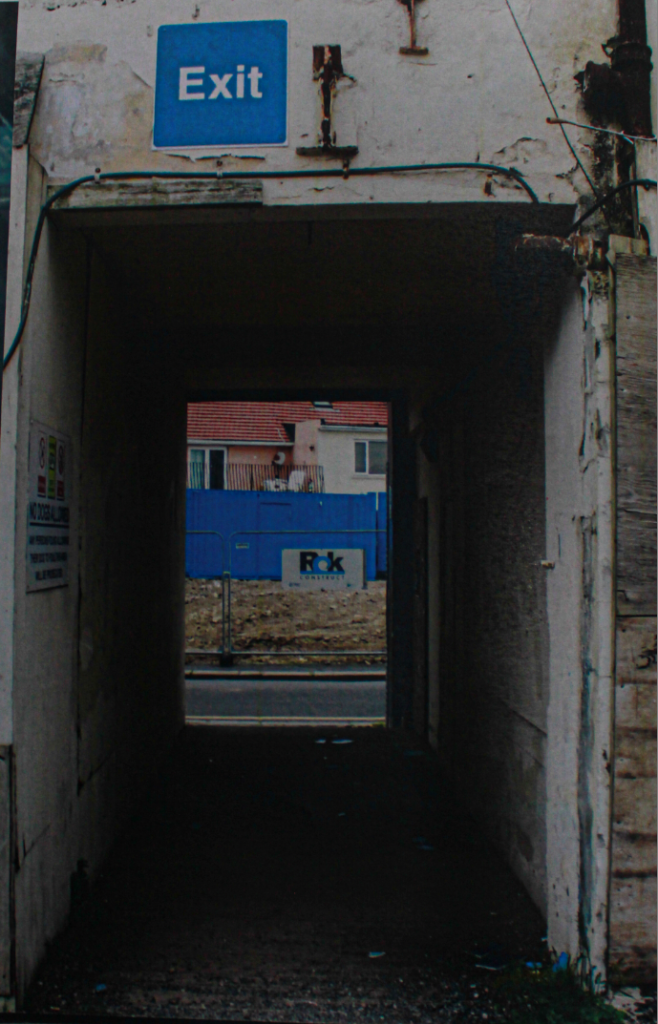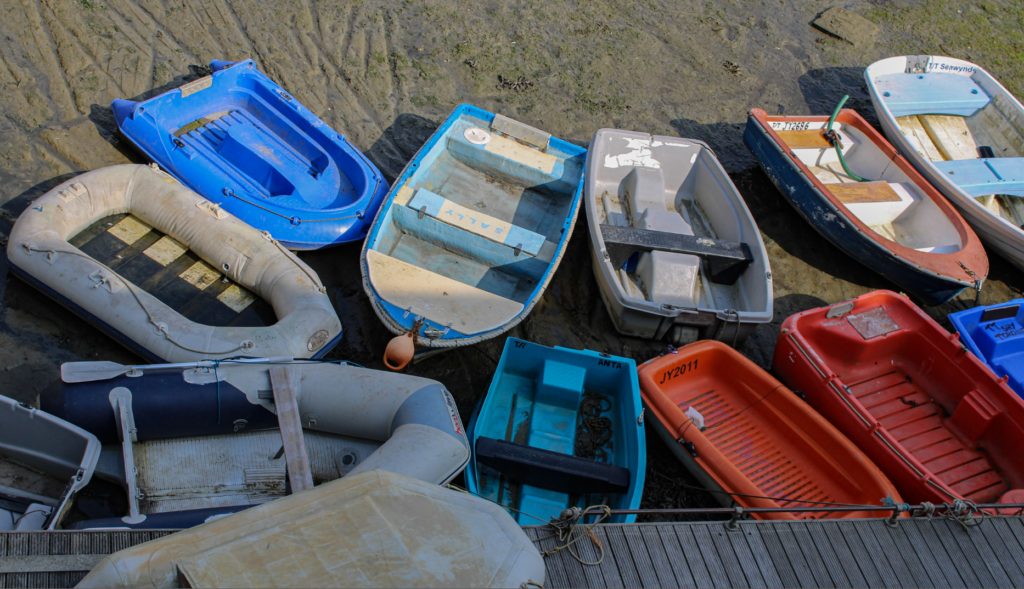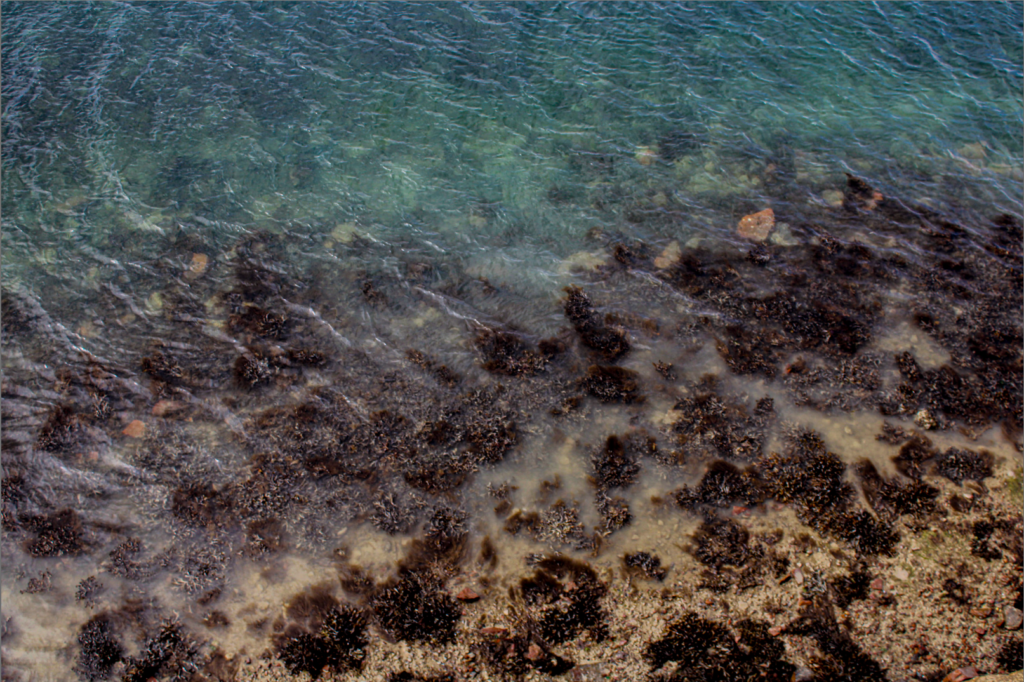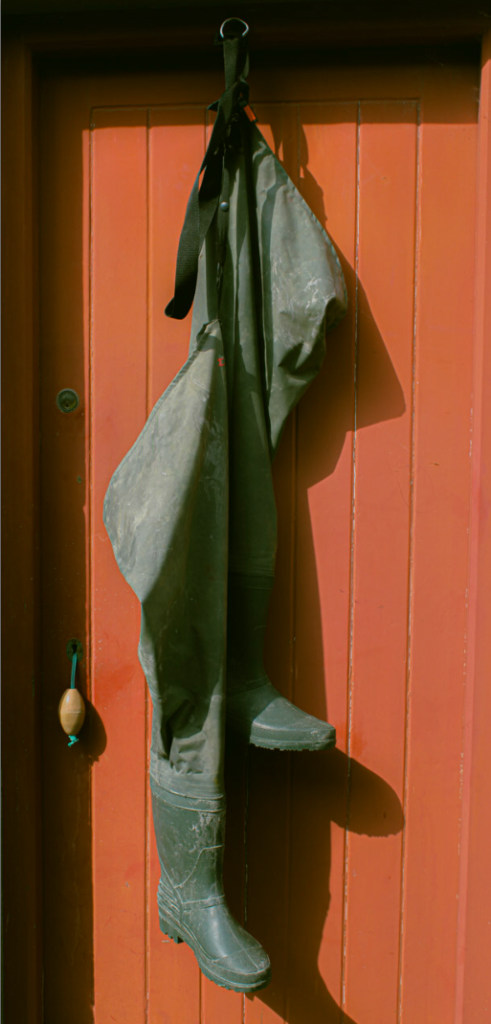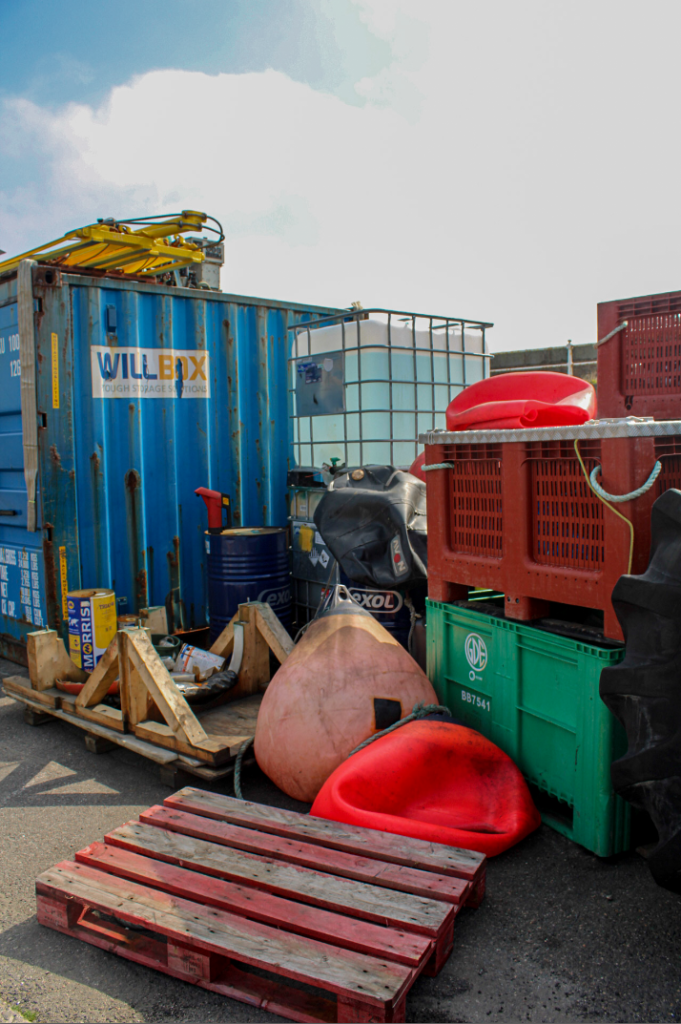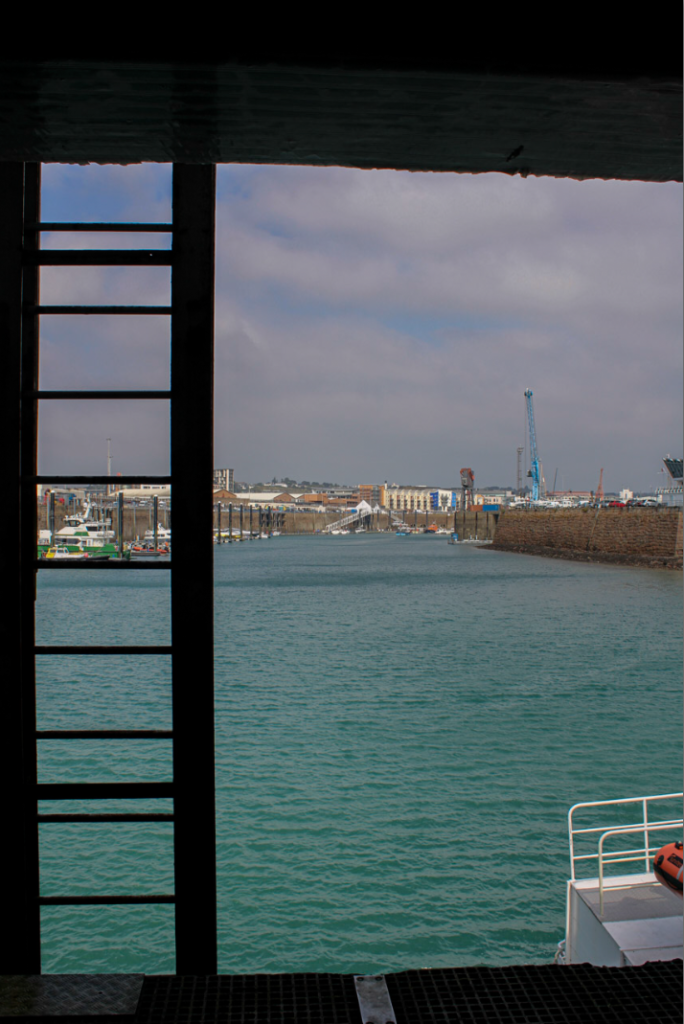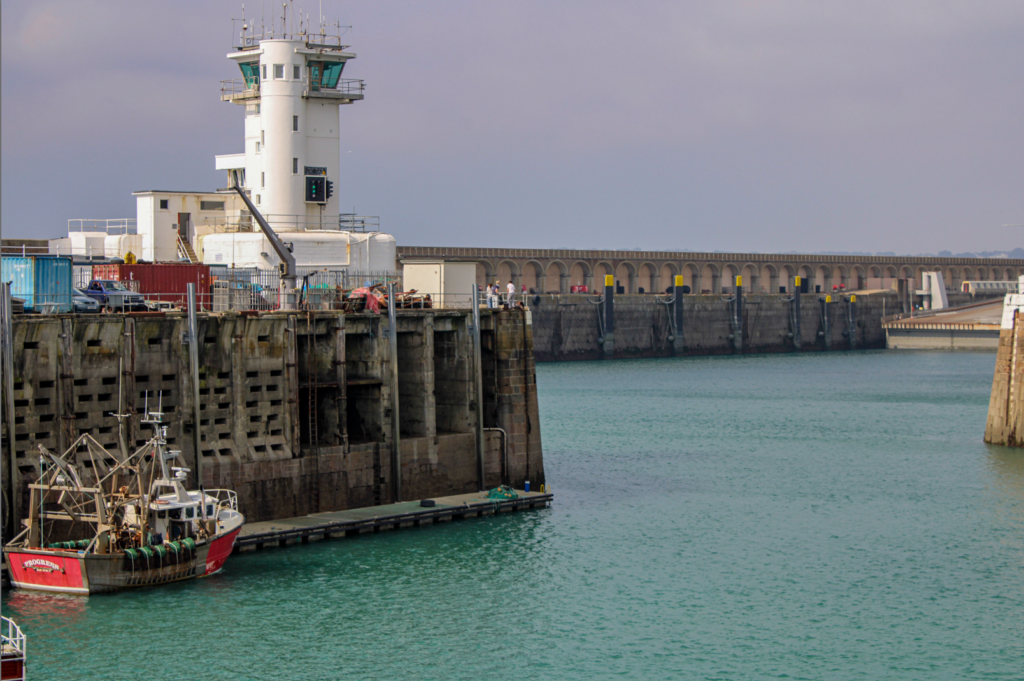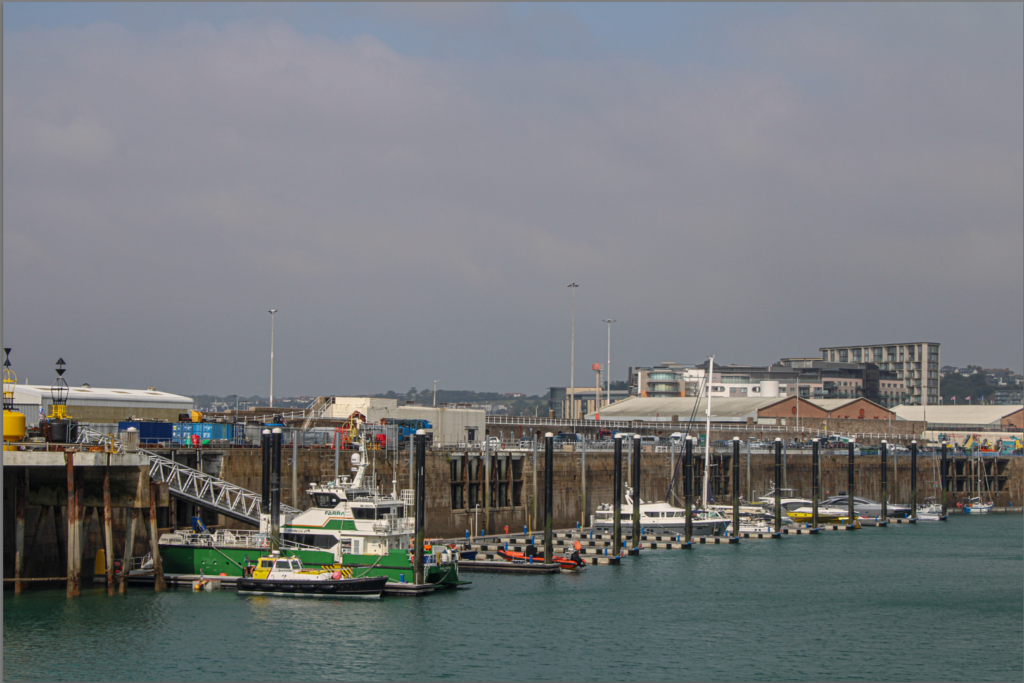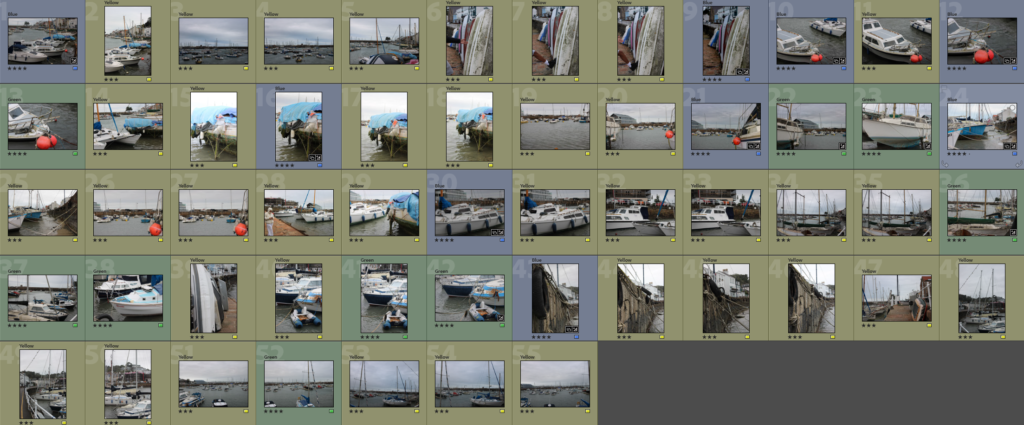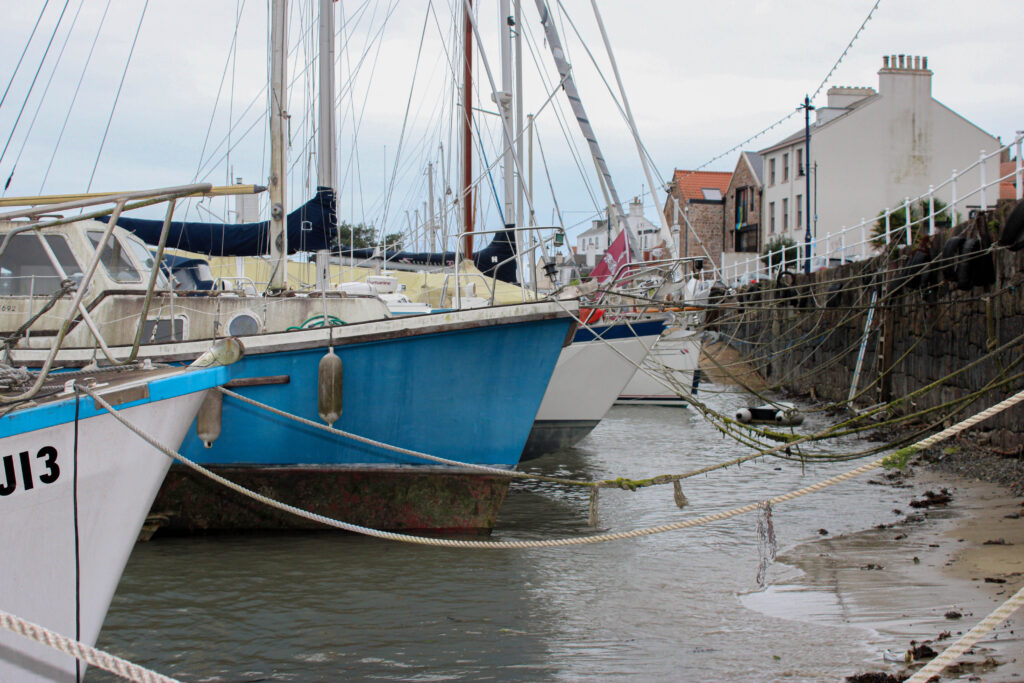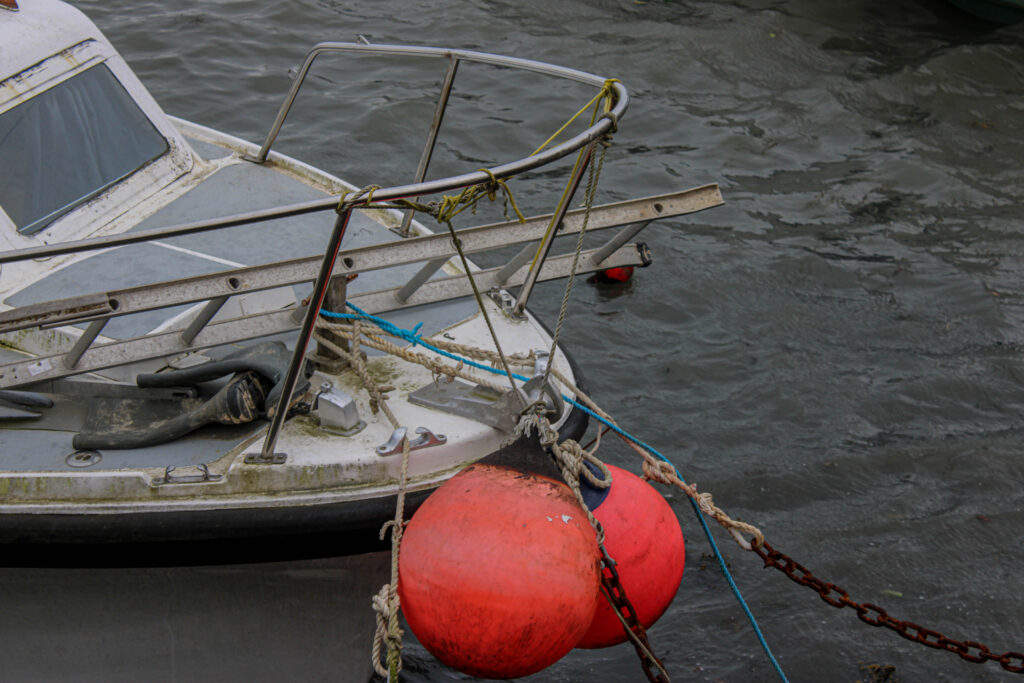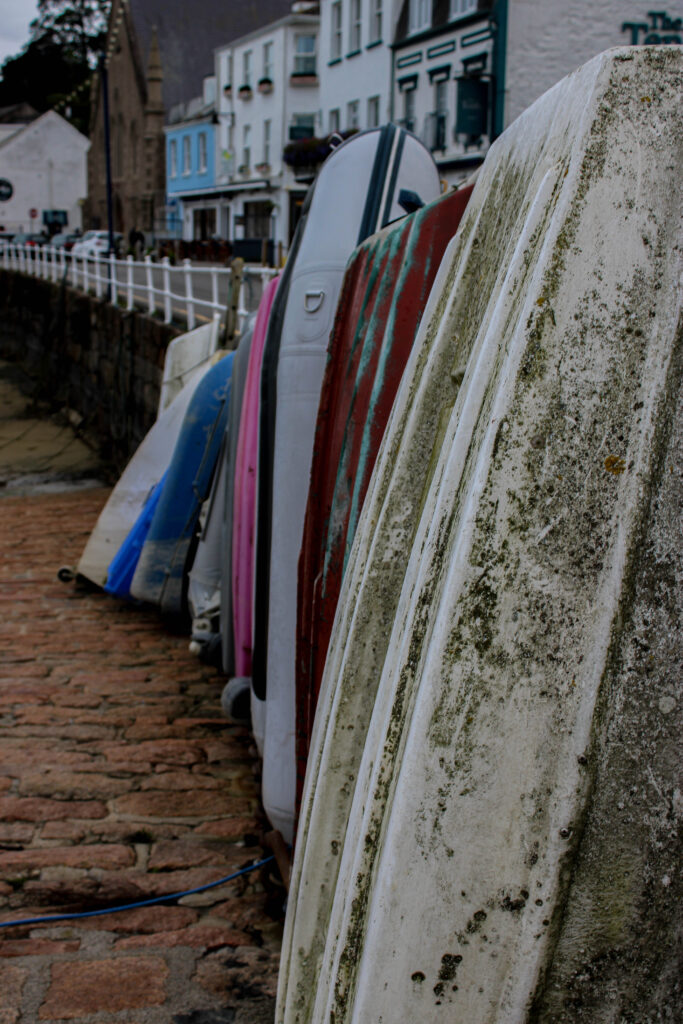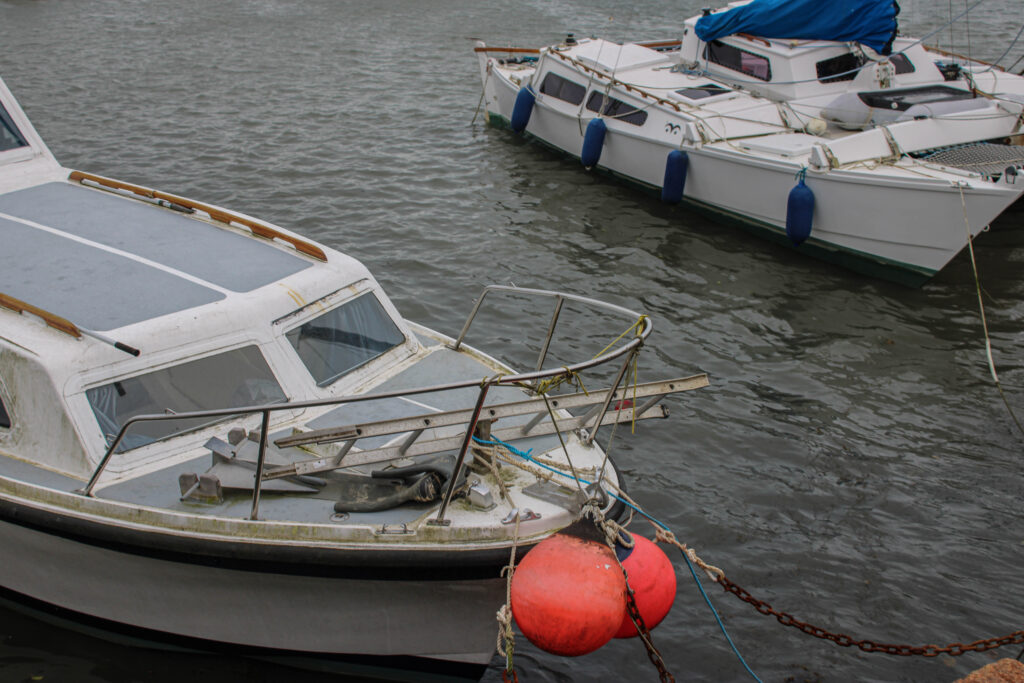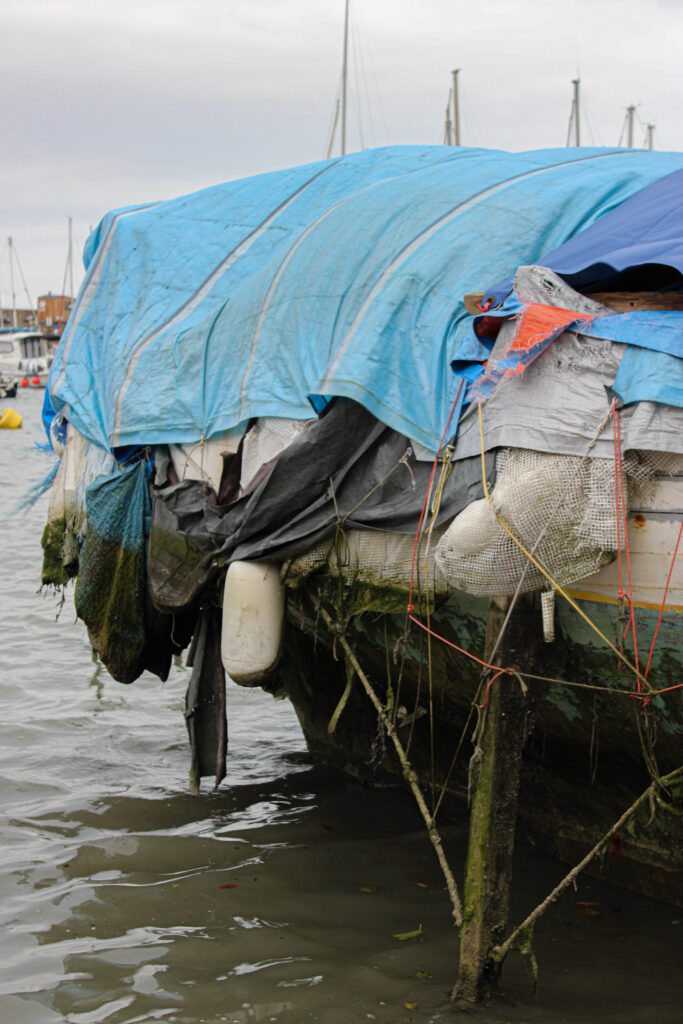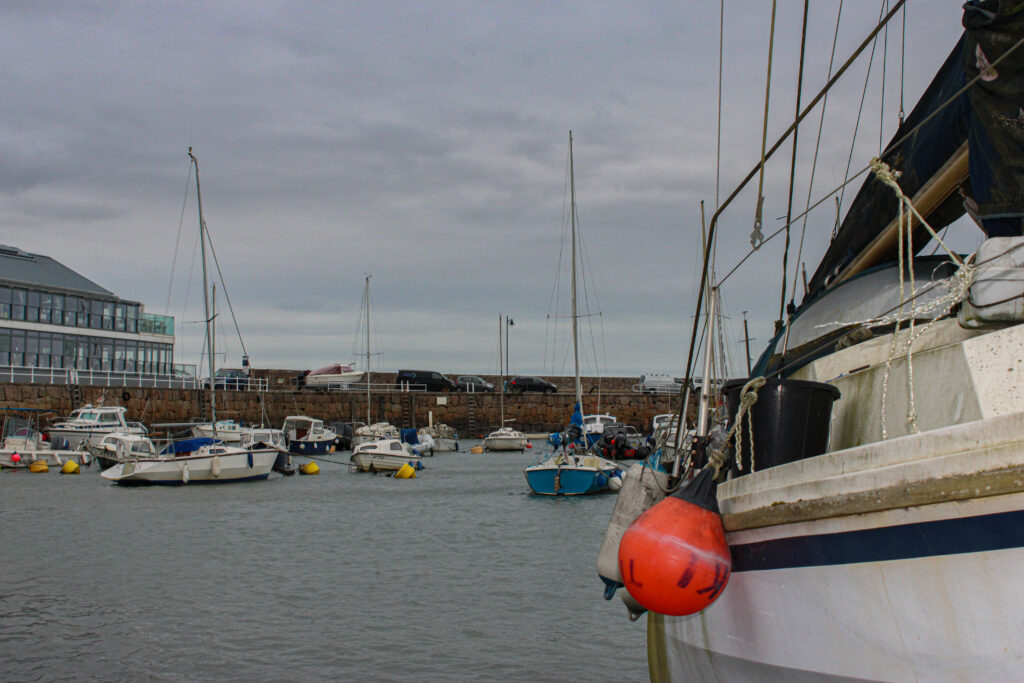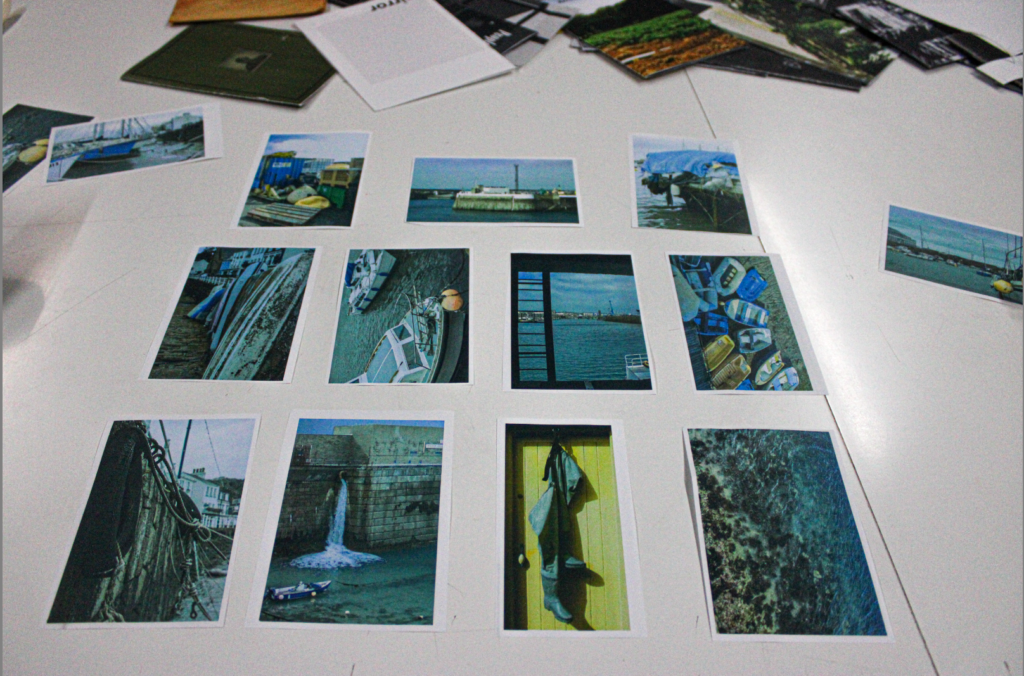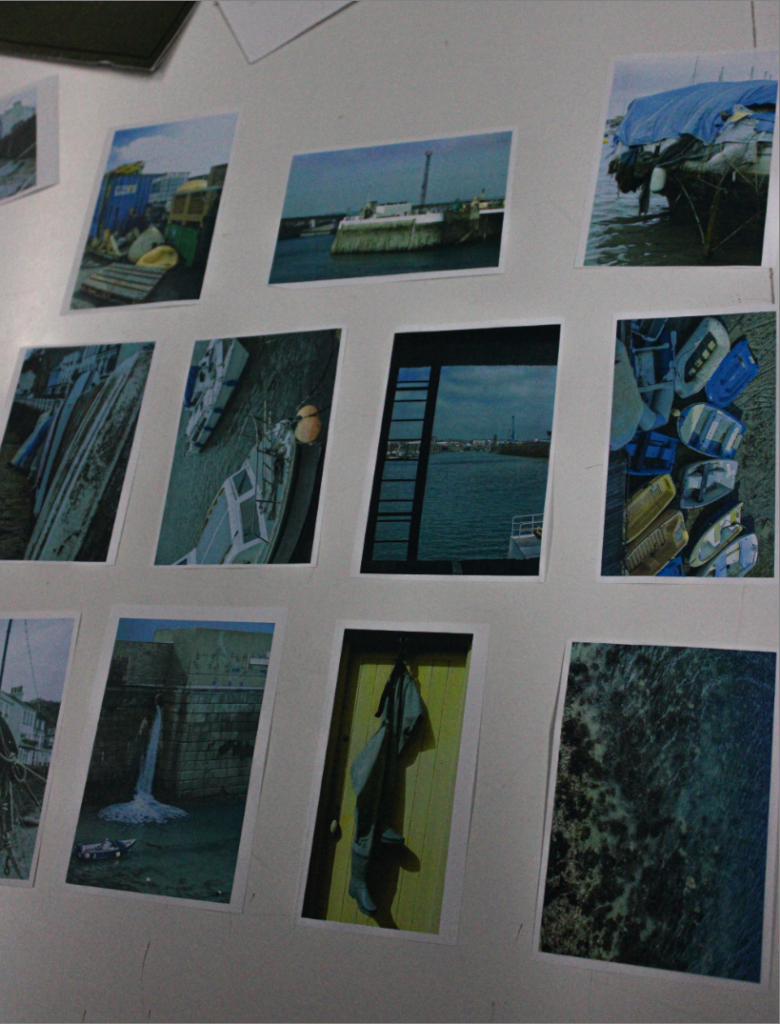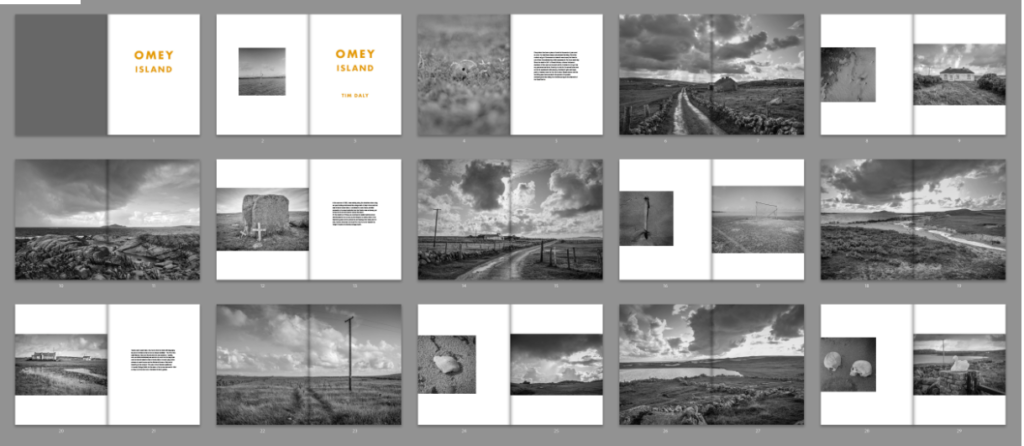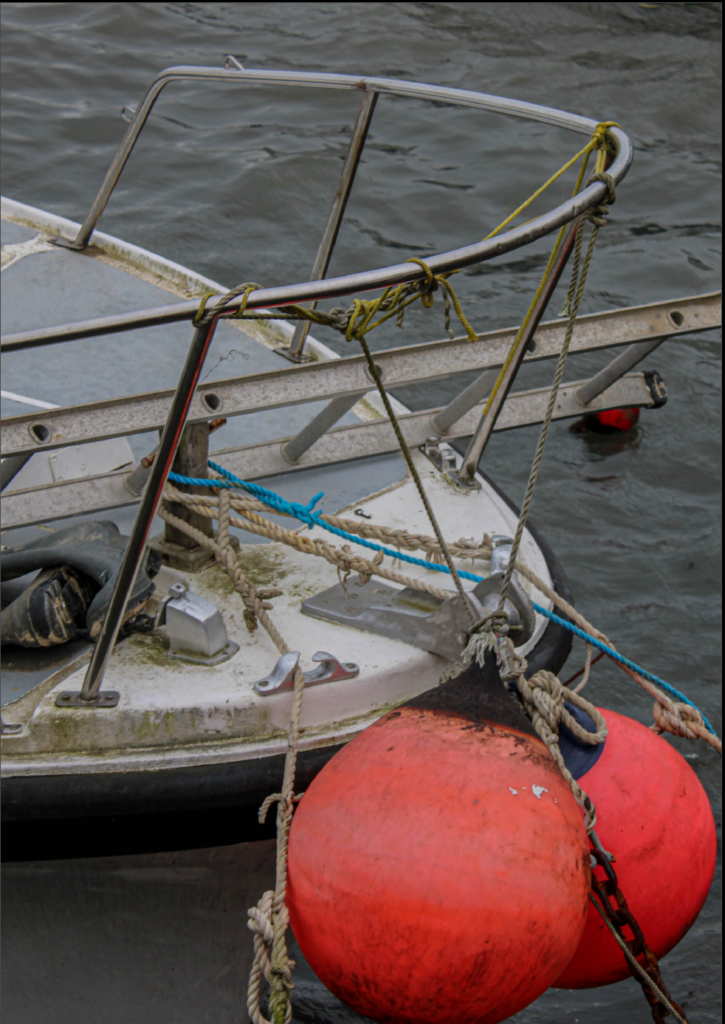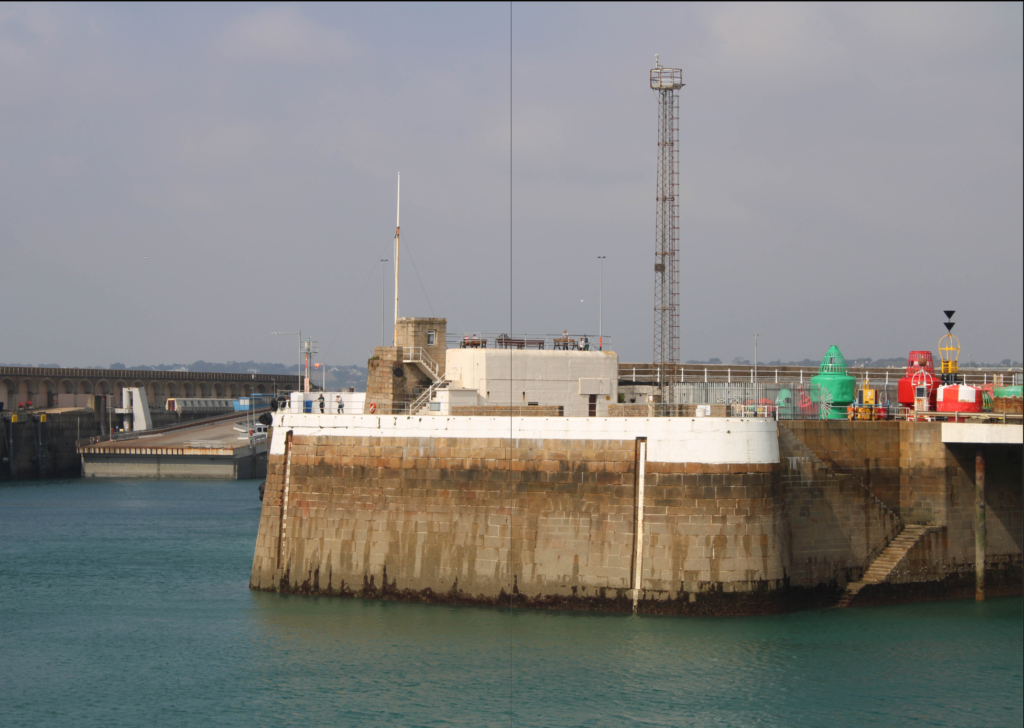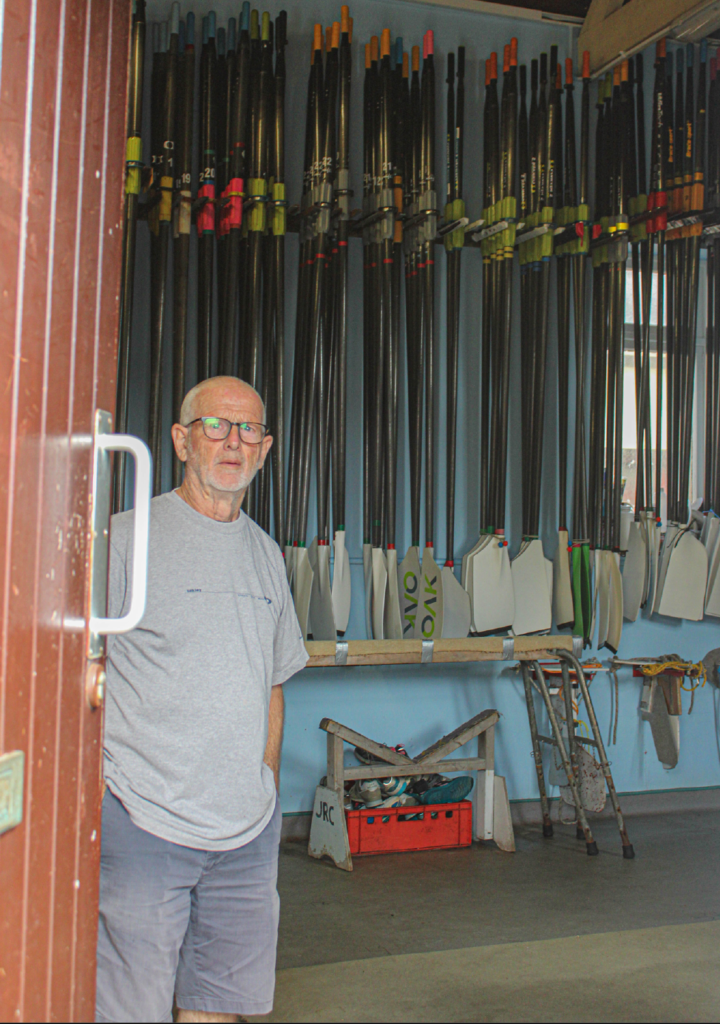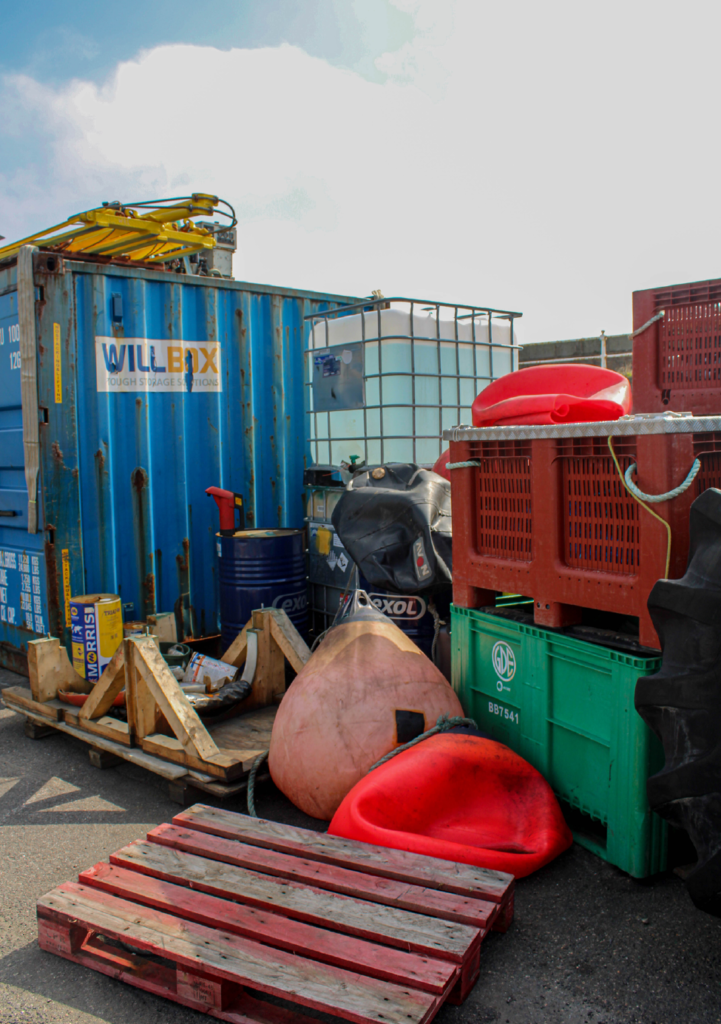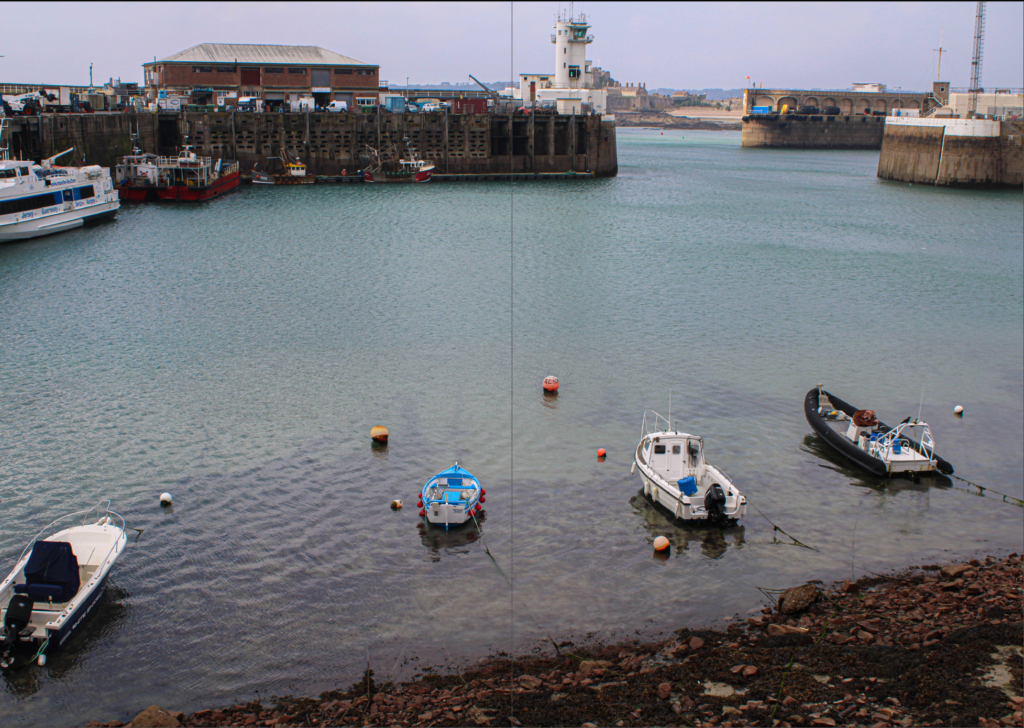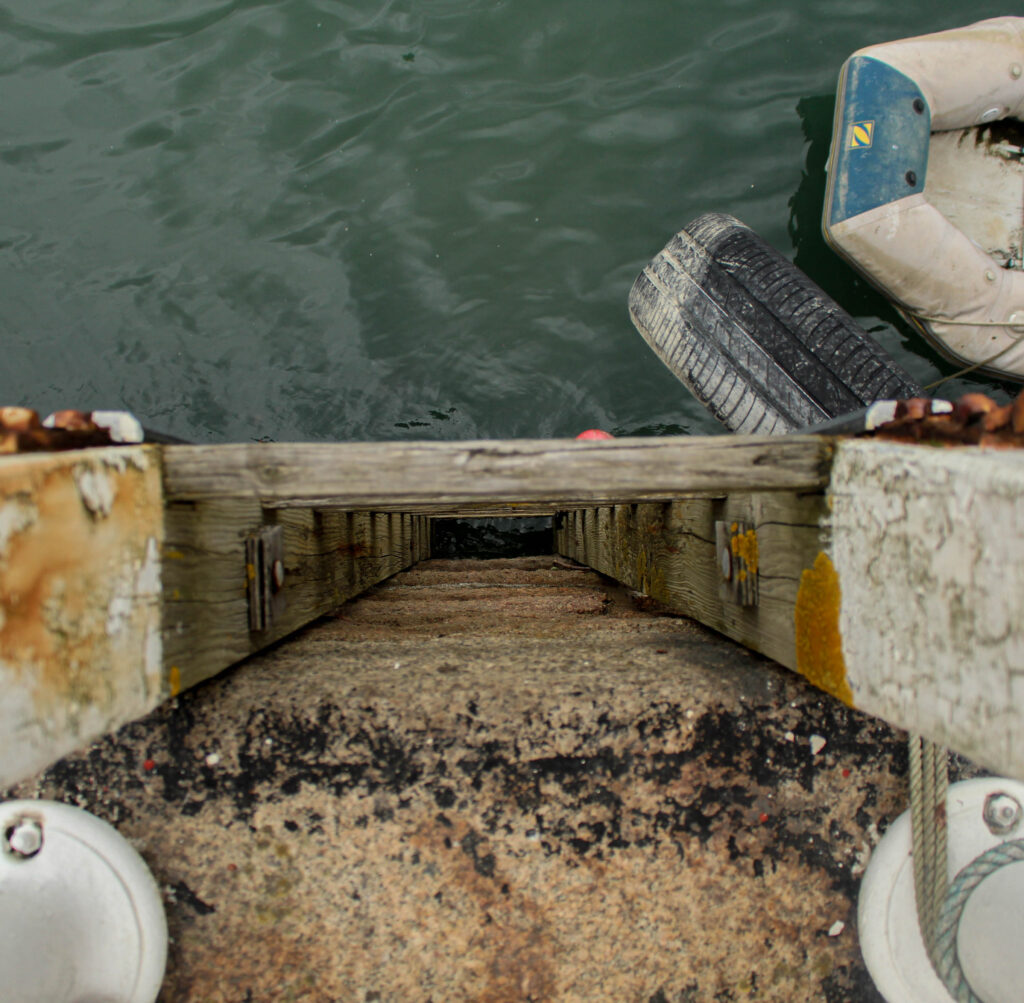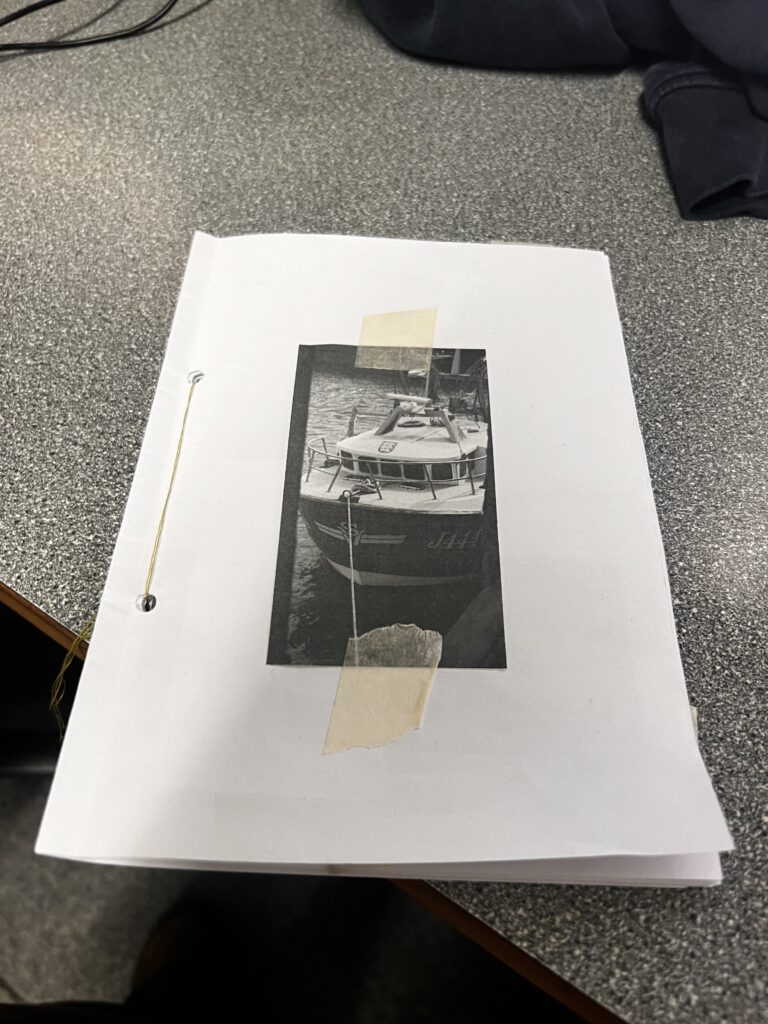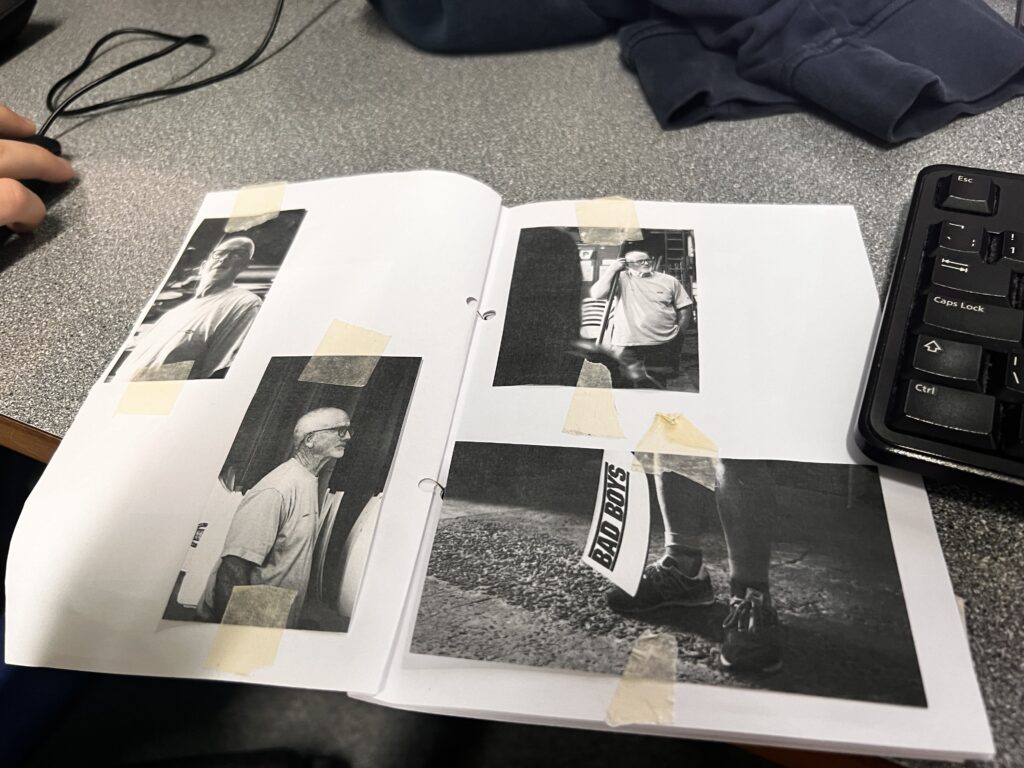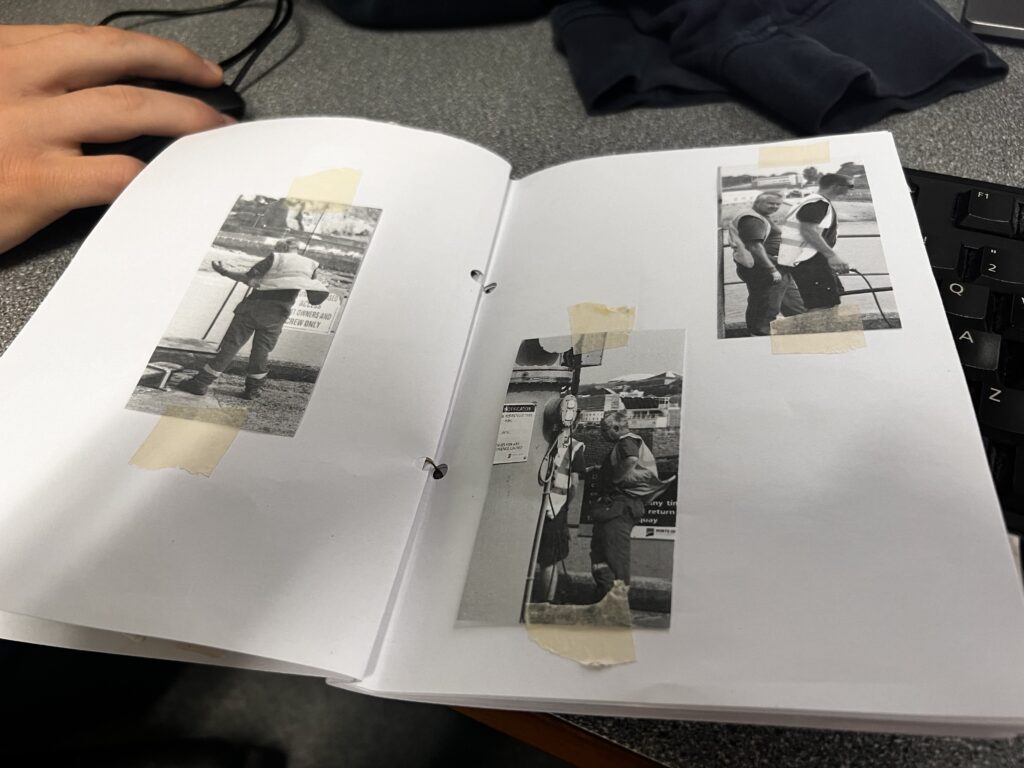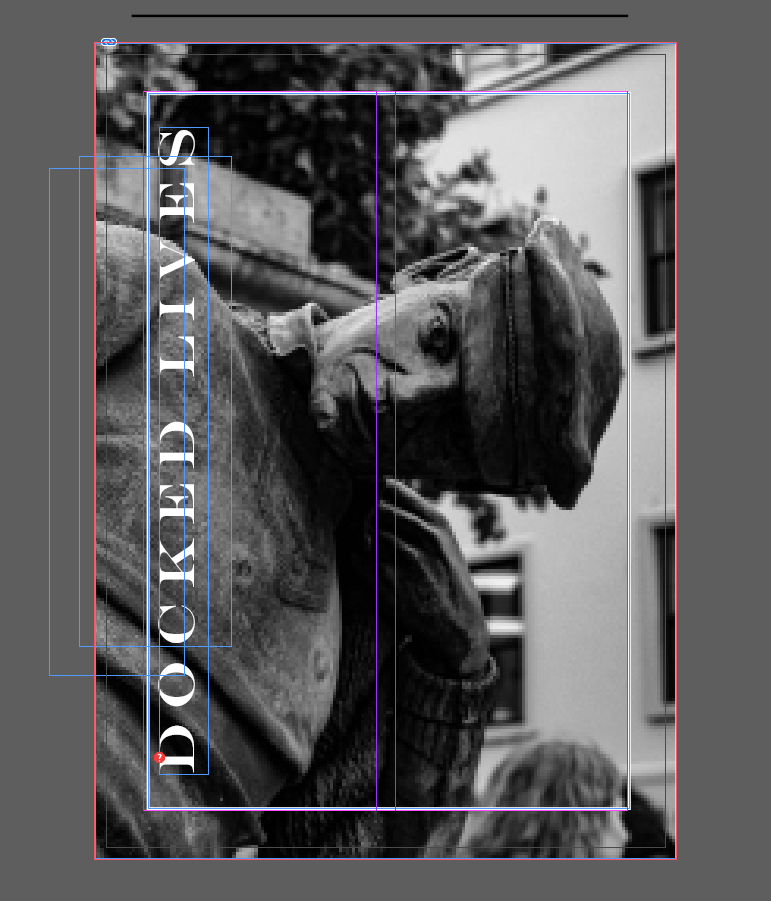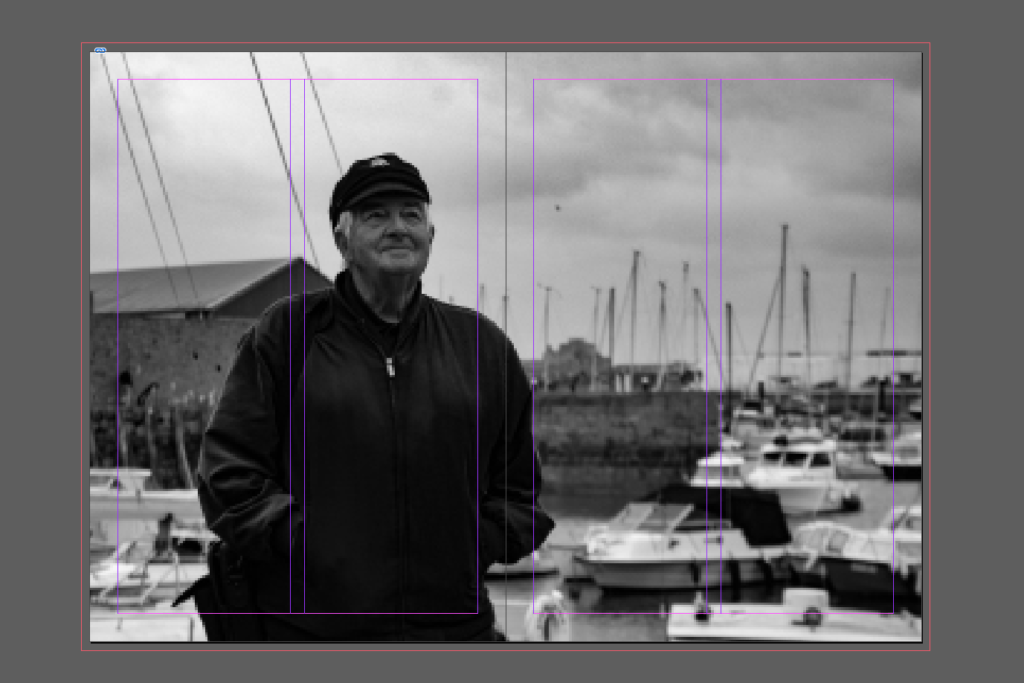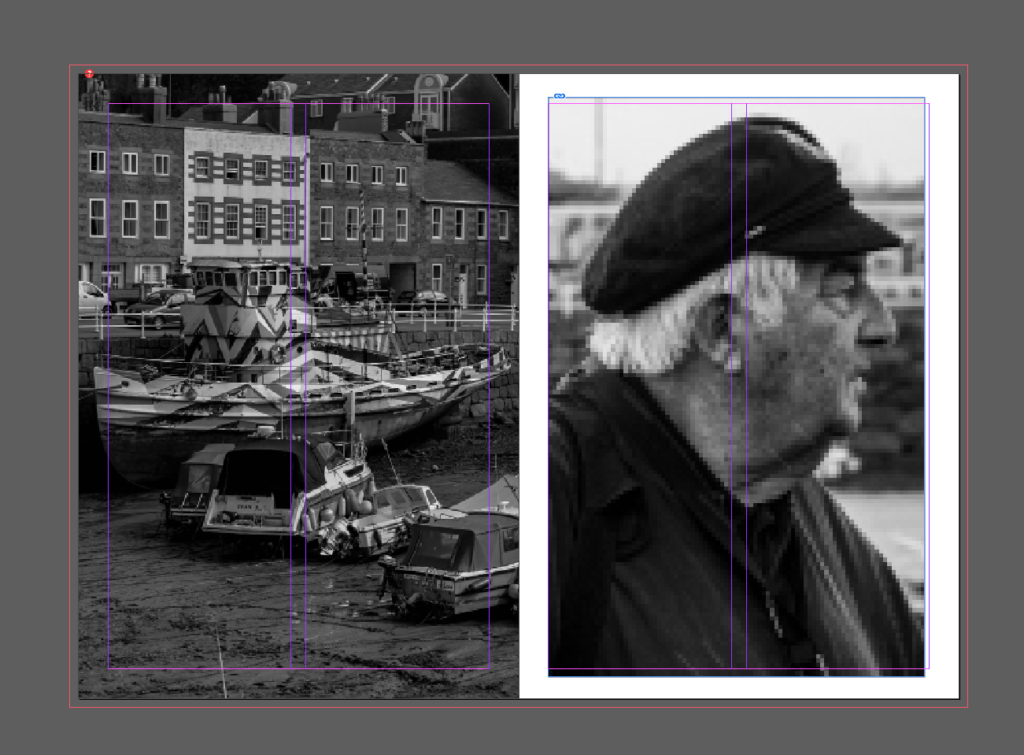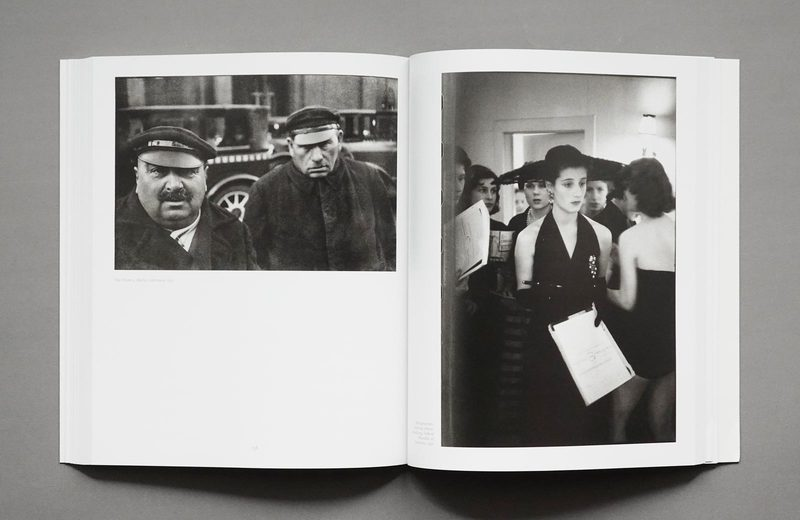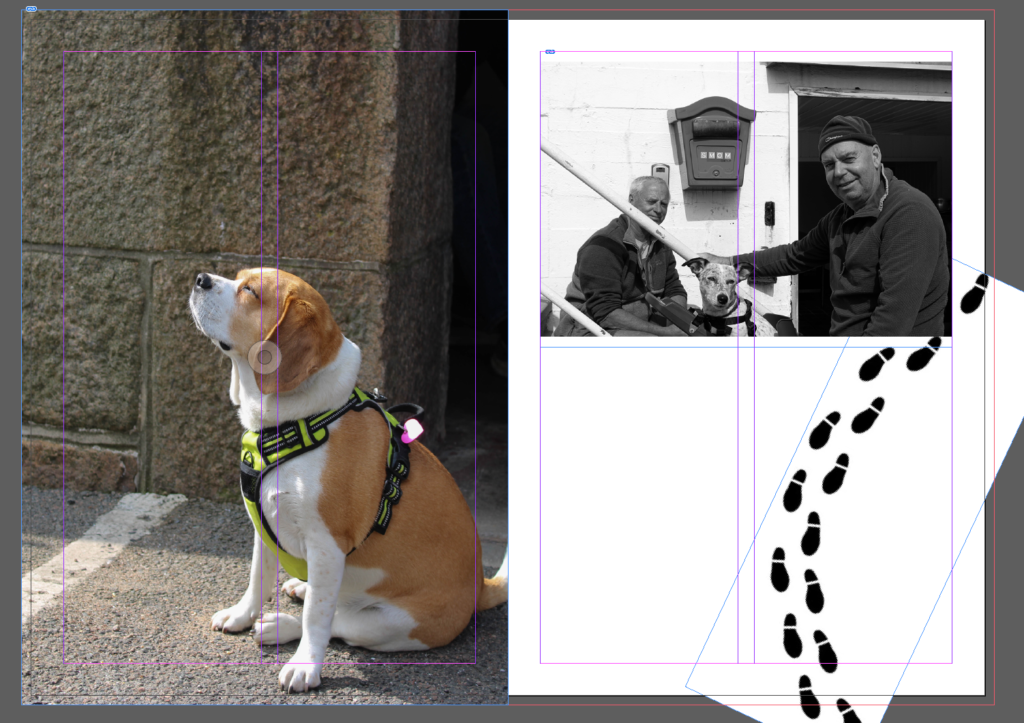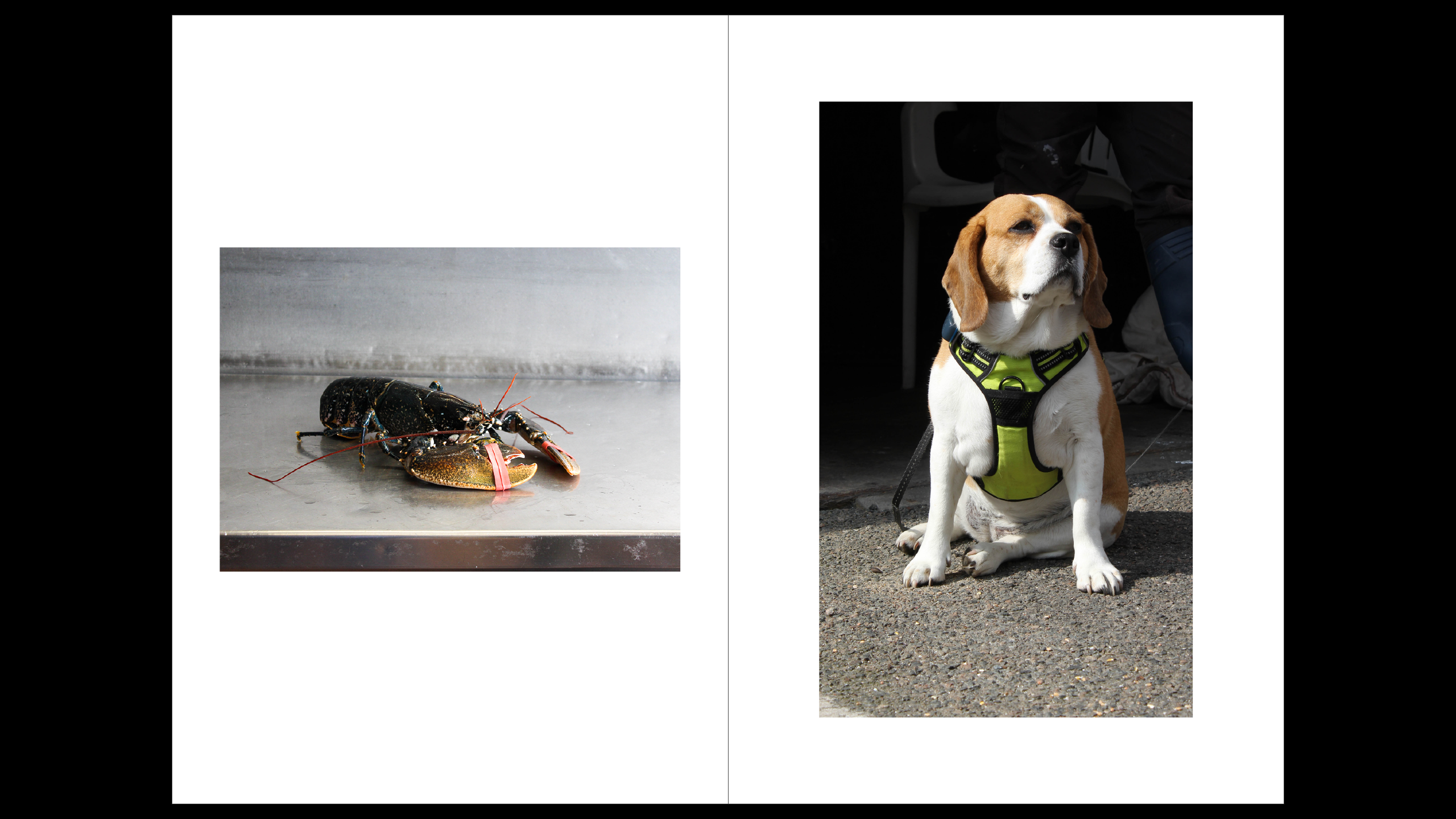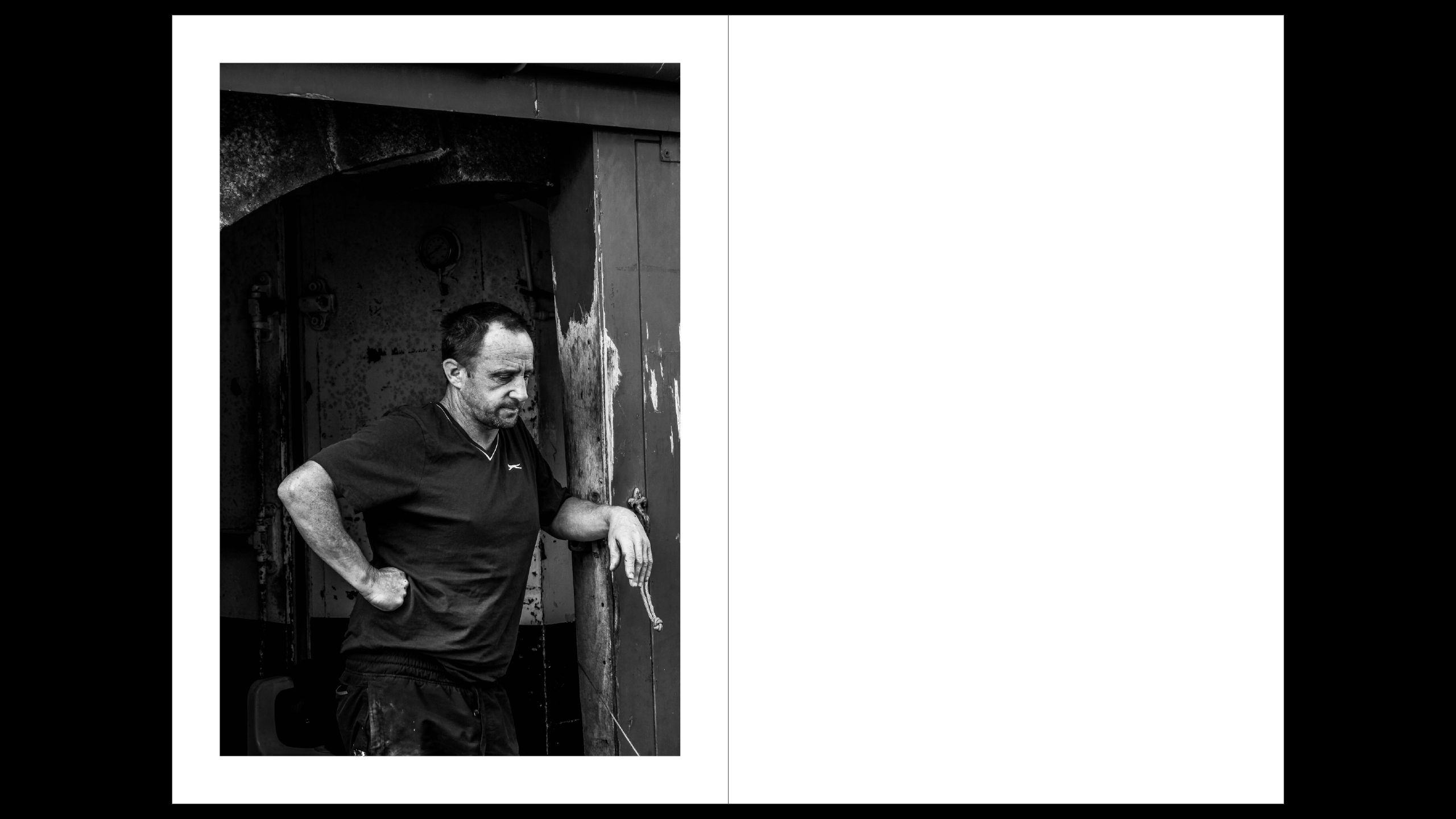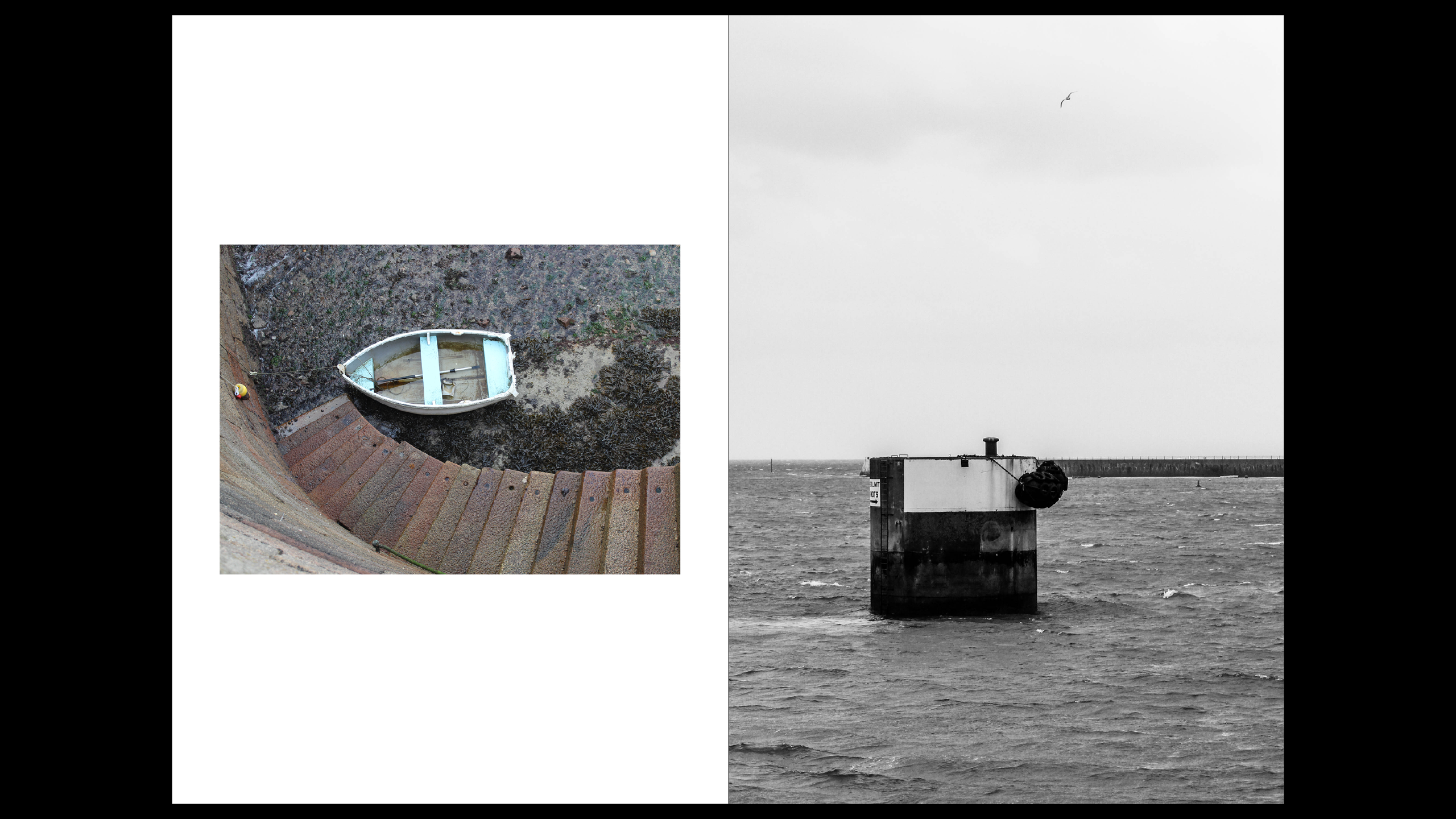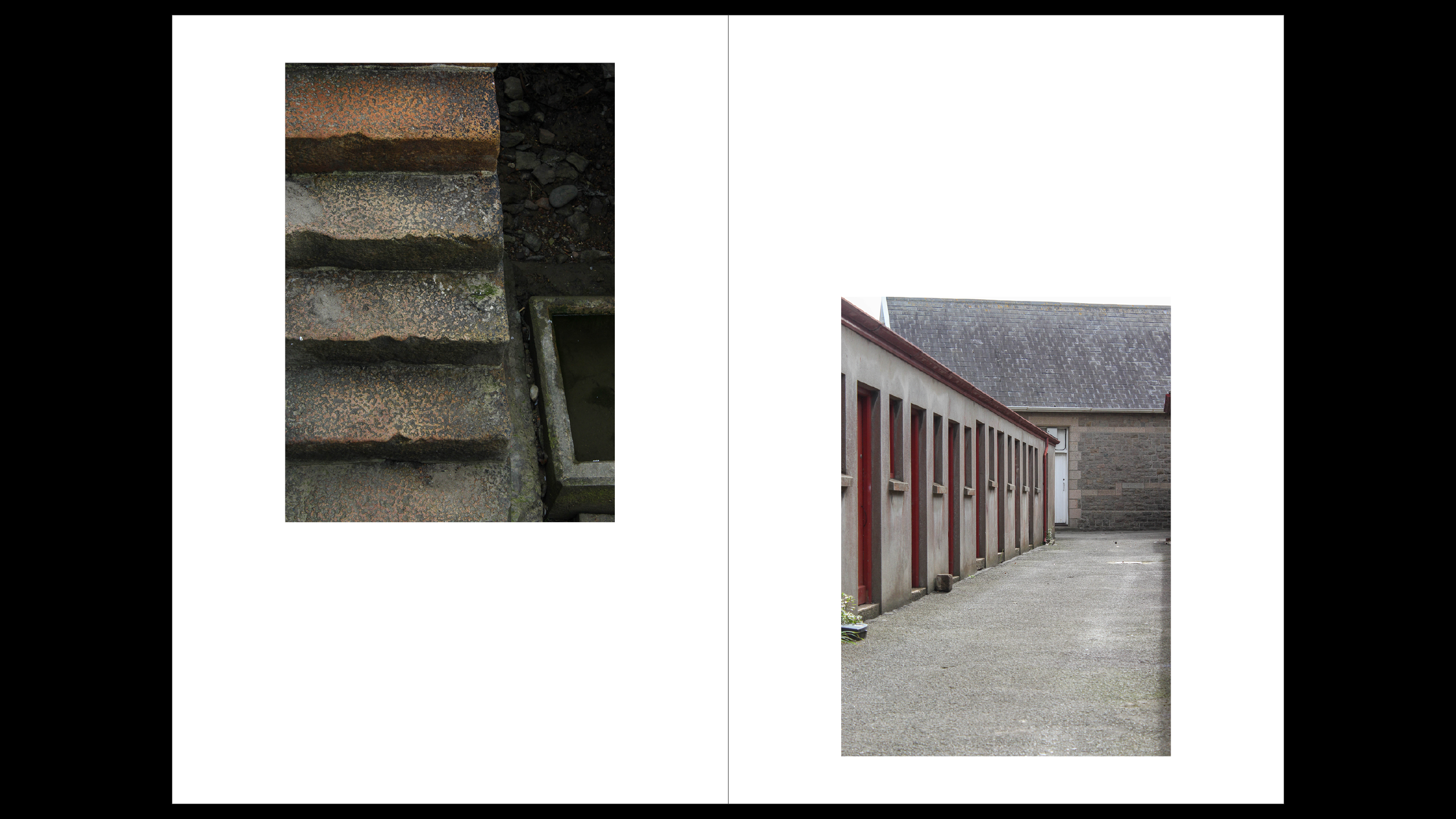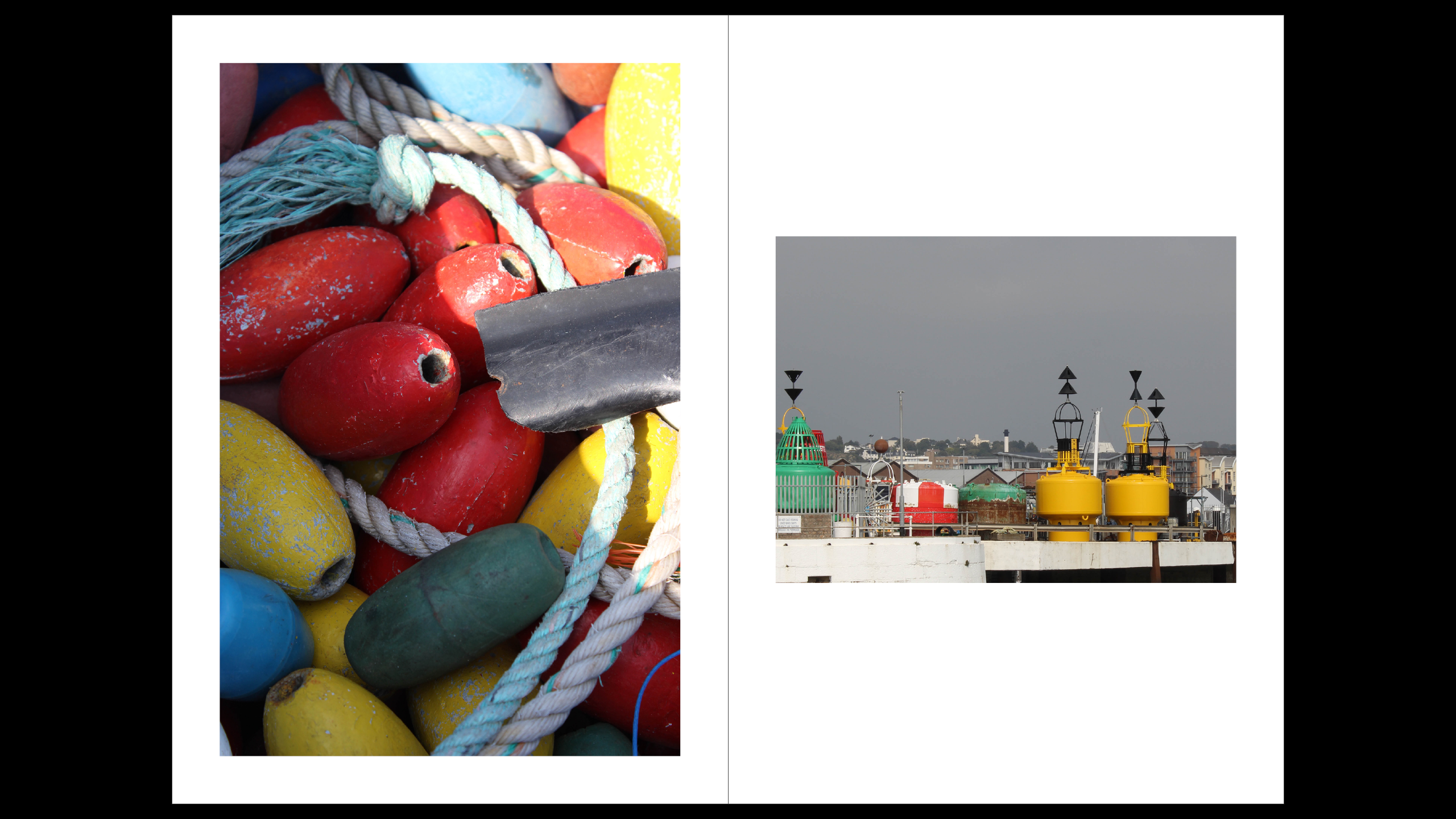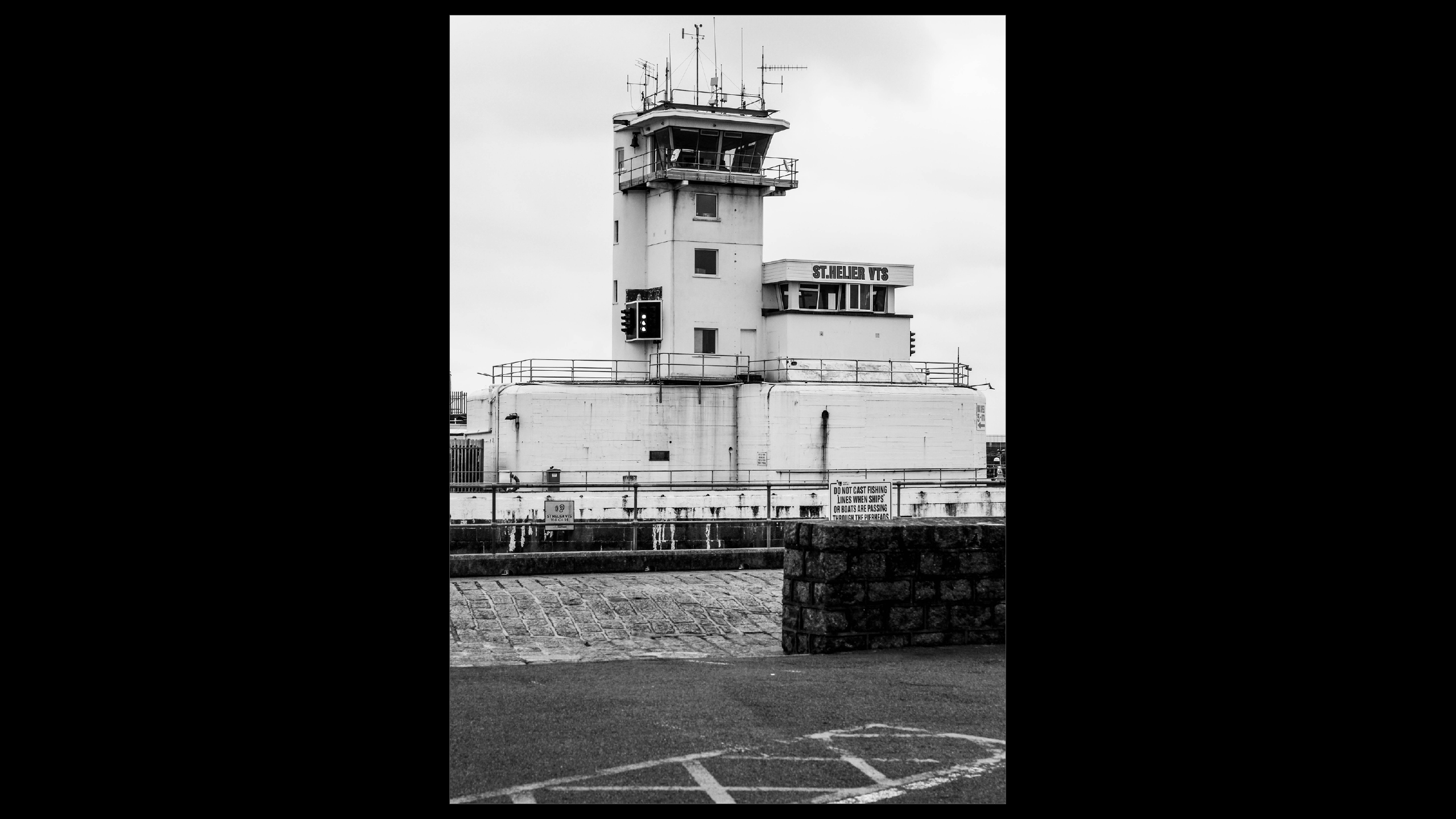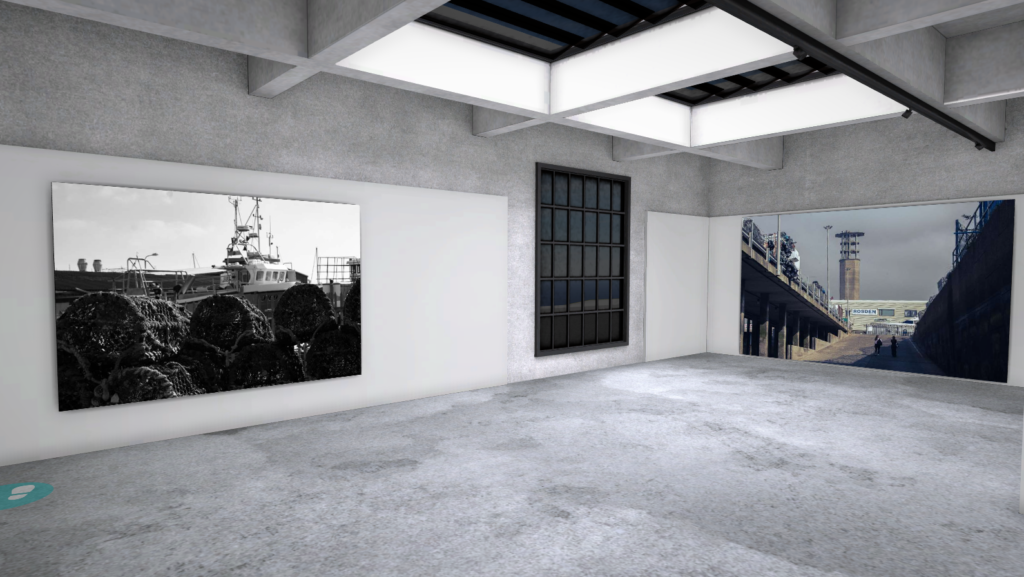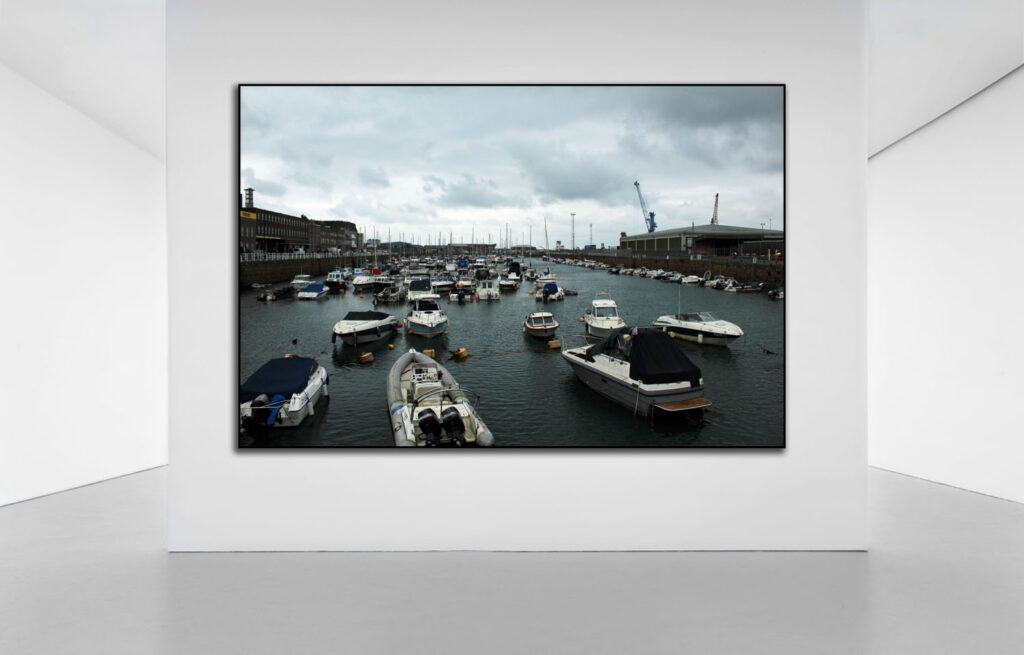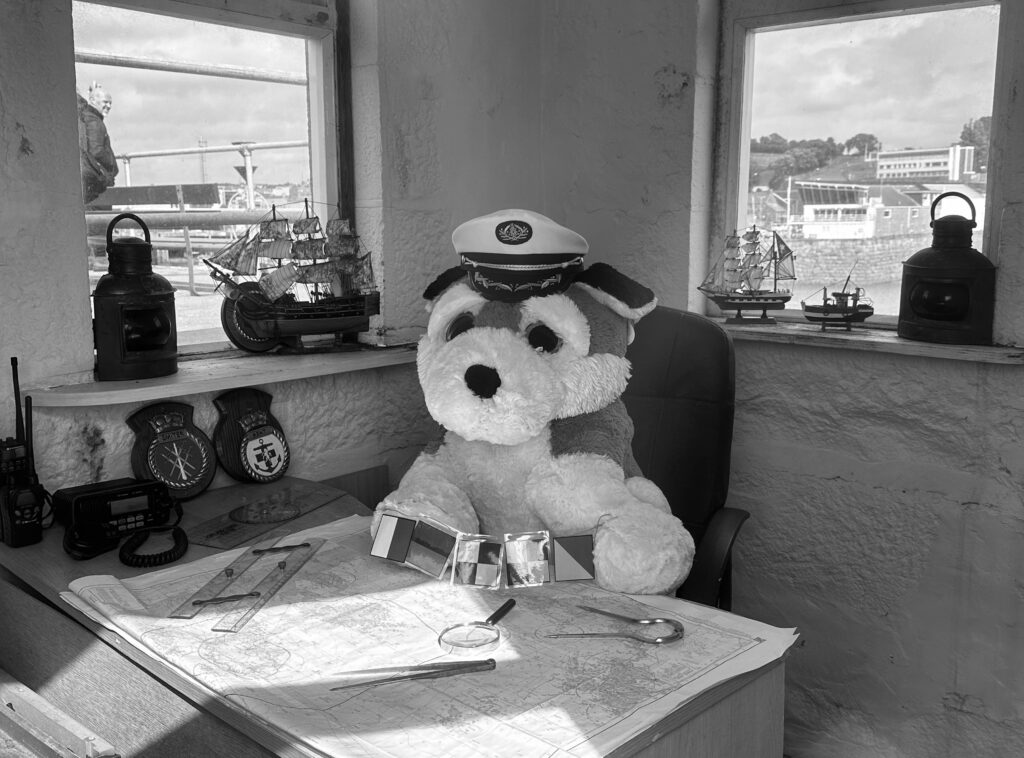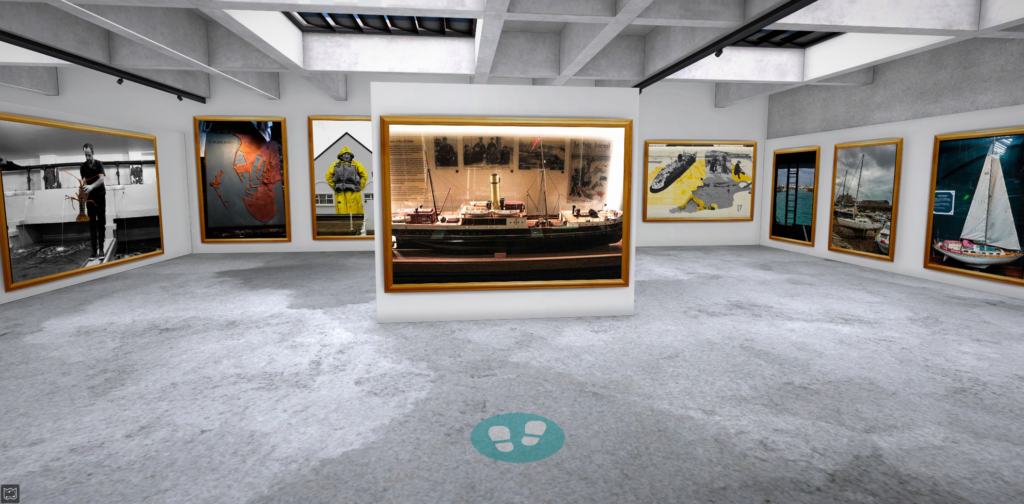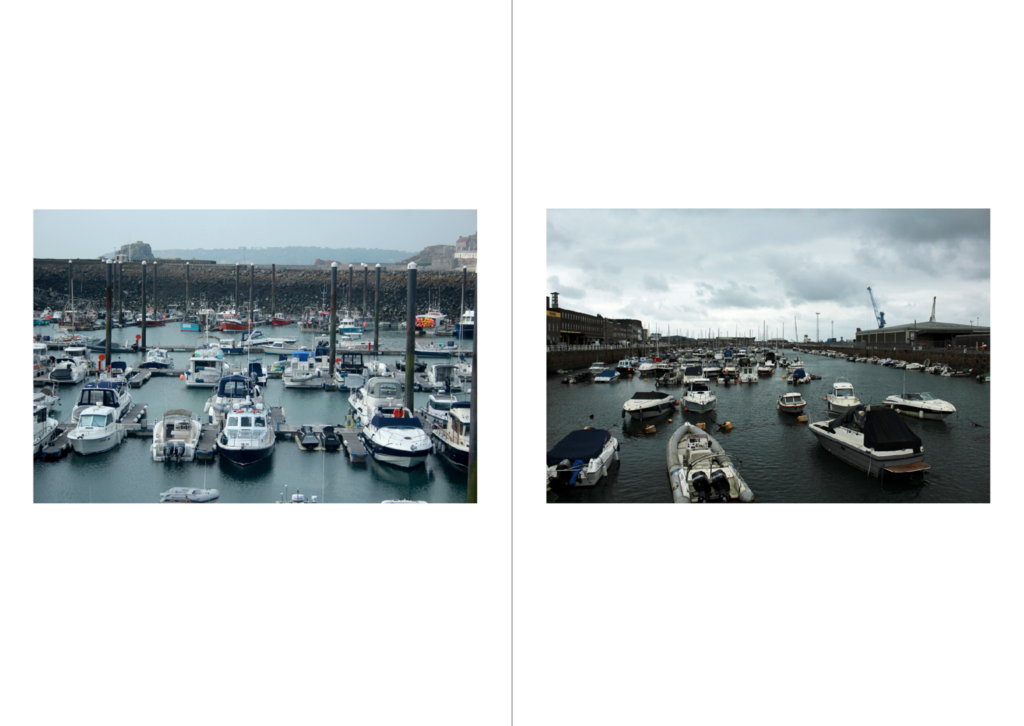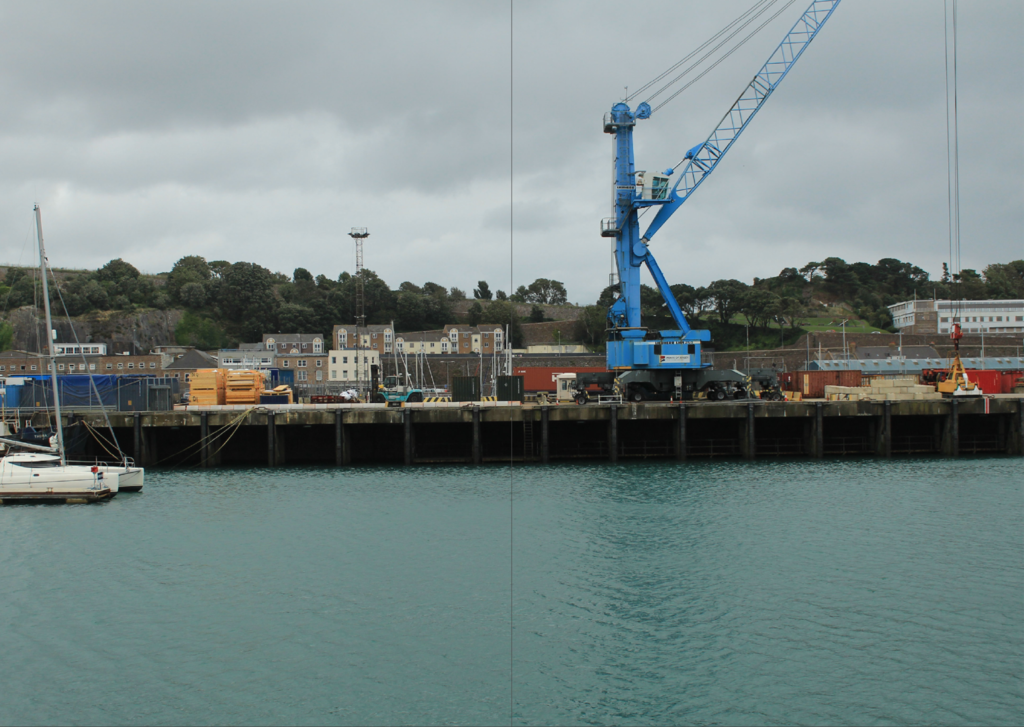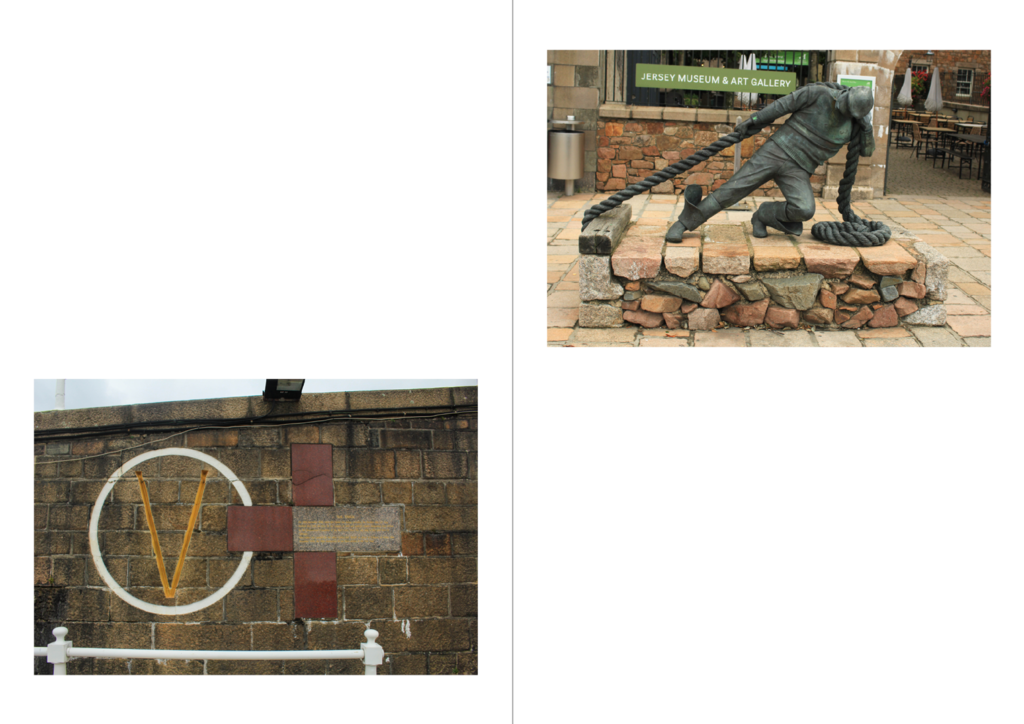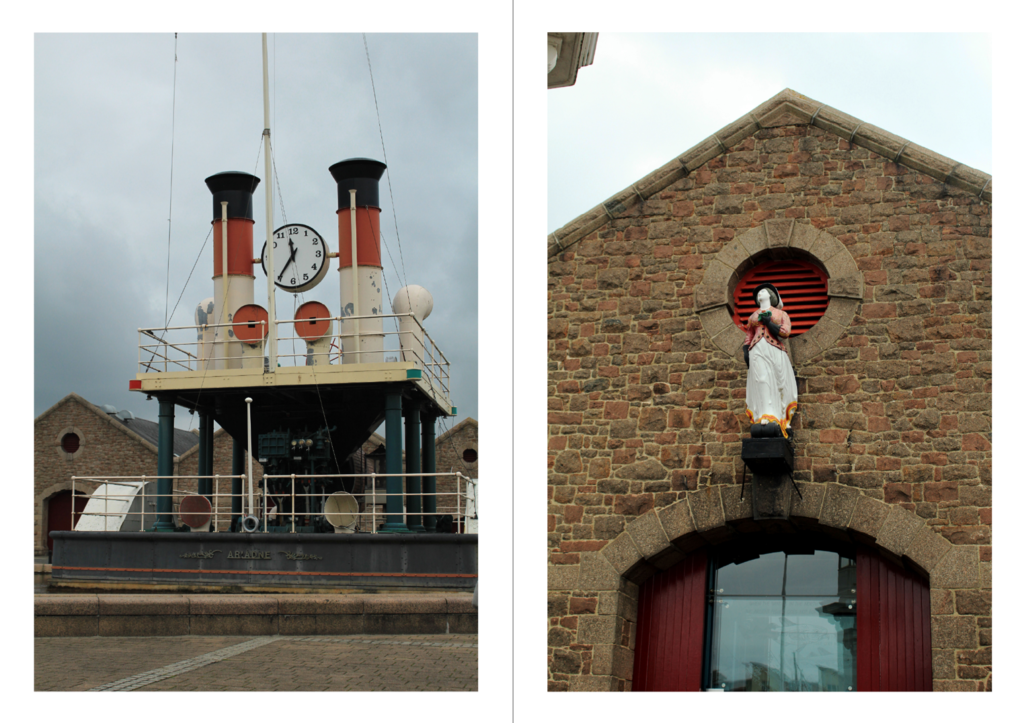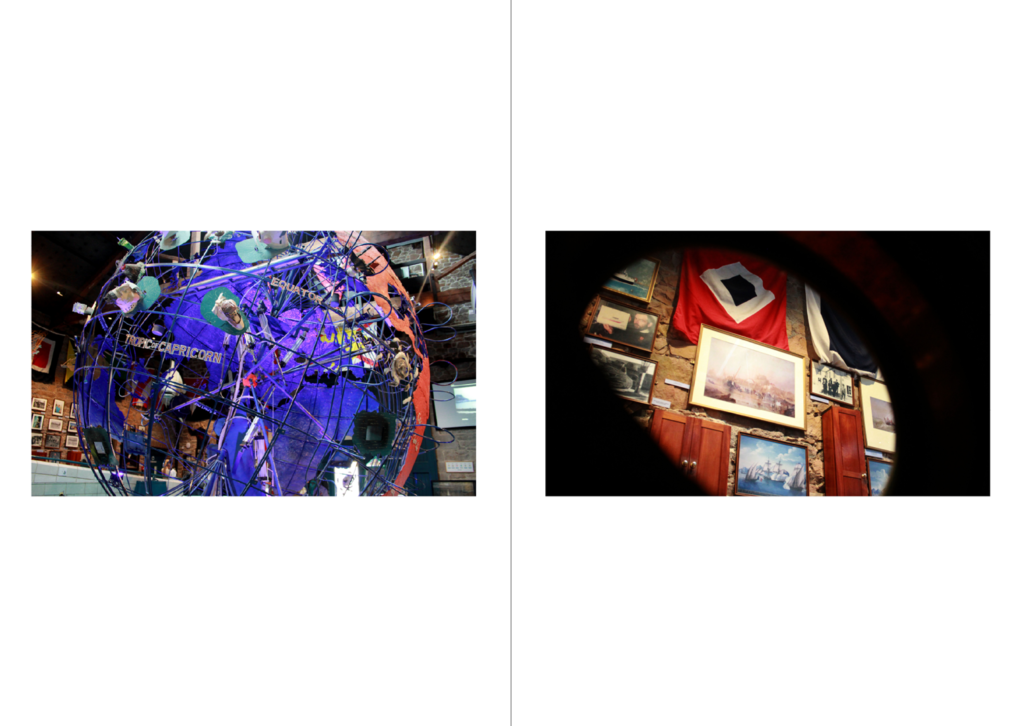I firstly designed a paper copy of my zine to give myself ideas on what my story is and how each photo should be places and give a vibe of the final product.
Then I went on to InDesign and made a online book of blank pages and began my zine. This is the front page of my zine, I decided to use this image as I though a lot of my portraits where very strong photos, this one also fits well with the title of fishermen’s footsteps, as it implies that I’m also saying this is Captain Bryans life and his footsteps, or journey through St Helier harbour.
This is my second and third page, I decided to add an introduction to give a vibe or an idea of what my zine would be showing, but I decided to do the introduction in sea shanty form, I also added footsteps throughout this page to look like a fisherman is walking through telling the story, walking his journey linking it to the title.
This is the 4th and 5th pages, I used one photo that I really liked and I thought fitted in well with my zine to link to the title even more ad continue the story showing someone working in the harbour like fishermen would back in the day and continue to this day.
In these two pages I matched having the red and same area together, I also added more footsteps to continue the journey and keep everything linked, I also like the photo of the boots because I thought that added well into the fishermen’s footsteps.
Once again I brought in the footsteps and added another portrait as I liked all my portraits and thought they told theory own story.
I continued to add the footsteps, as this image both has dogs I thought it linked very well together, I also considered adding some dog footprints but thought it might be random addition.
This was another full bleed image across both pages, i added the sea to kind of say how fishermen go into the sea a lot, most of their journey contain the sea and that why it takes up two pages, I also tried to have majority land images before this image and after this are all things that come from the sea or what fishermen catch.
these images all link together into my story as these are the fish that make fishermen FISHermen, they all link as well because it is either lobsters or an actual lobster catcher.
this is my final page, the back photo and I had it have bright red colours to link with other red photos in the book. I also felt it was a strong image to have last.
Evaluation
This is my final zine, which I printed out. I was really pleased with the outcome of it, my first photo, was one of my favourites as it was a portrait and thought it fitted really well with the title, it was a full bleed image that was warm coloured and matched well with the title font, I liked this image because not only was it fun to take and showed some of my best work it began the story strong. one thing I did not like was the background as it was boring but it did go well because it was the St Helier harbour. After that my first two pages was an introduction in sea shanty form, I was actually really pleased and enjoyed writing it, and thought it went well and was a funny contribution to my zine. The next photo was a good photo and I really liked it but I thought the black border didn’t look as good as as I wanted, and thought it was a random place to put it. Then it was another full bleed image which I really liked and fit really well as it was a fishermen working in the harbour. After that I created the 6th and 7th page this was red theme and reintroduced Captain Brian, the images worked well together as they were in the same area and they both linked back to the title page continuing the story on throughout my zine. I didn’t love the photo of the shoes because of the angle it didn’t work as well as I wanted. Then I had another portrait which was another good attribute to my zine, because it linked with the title and the previous page. They also both went with each other because they are in black and white and are of the same area. The second image I didn’t like as much because I gave an old aesthetic look which wasn’t what I was aiming for in my zine. I once again had these images linked together because they both have a dog in them, I didn’t like how one image was black and white but it edited better that way. I added another full bleed image across two pages, I liked this photo of the sea because I thought it looked aesthetic, and went well for my story as they headed in the sea and fishermen are in the sea a lot. Then I had the photos of the lobsters and lobster catcher, this was one of my favourite pages because of how well everything linked with each other and I really liked the bright colours as it was just a happy page. My final page was also another image I enjoyed taking and editing and it linked back to the red because of the red colouring. Overall I was more than pleased with how my zine turned out.

